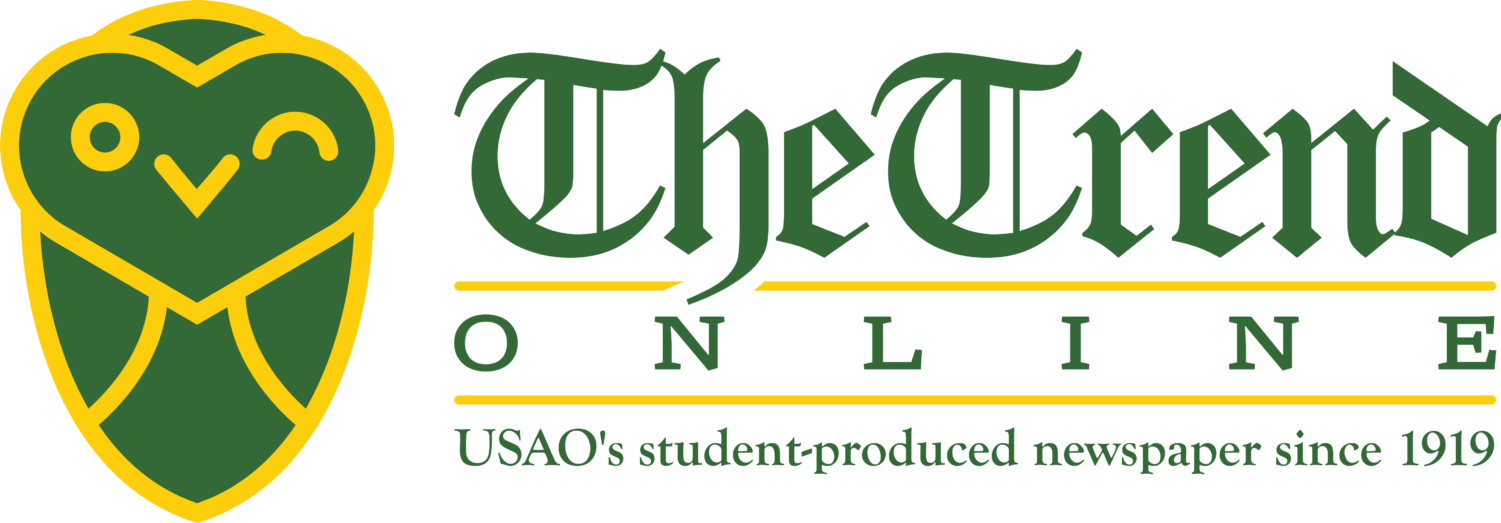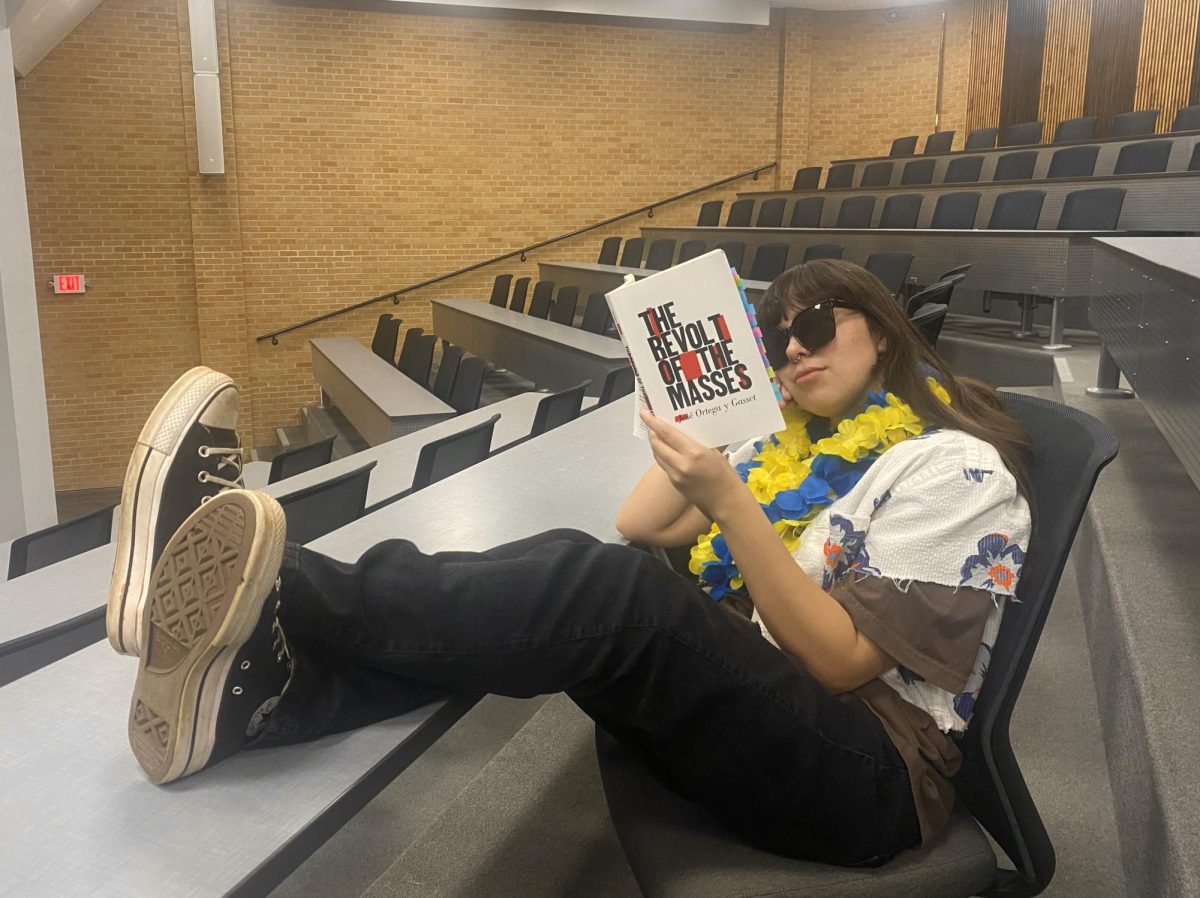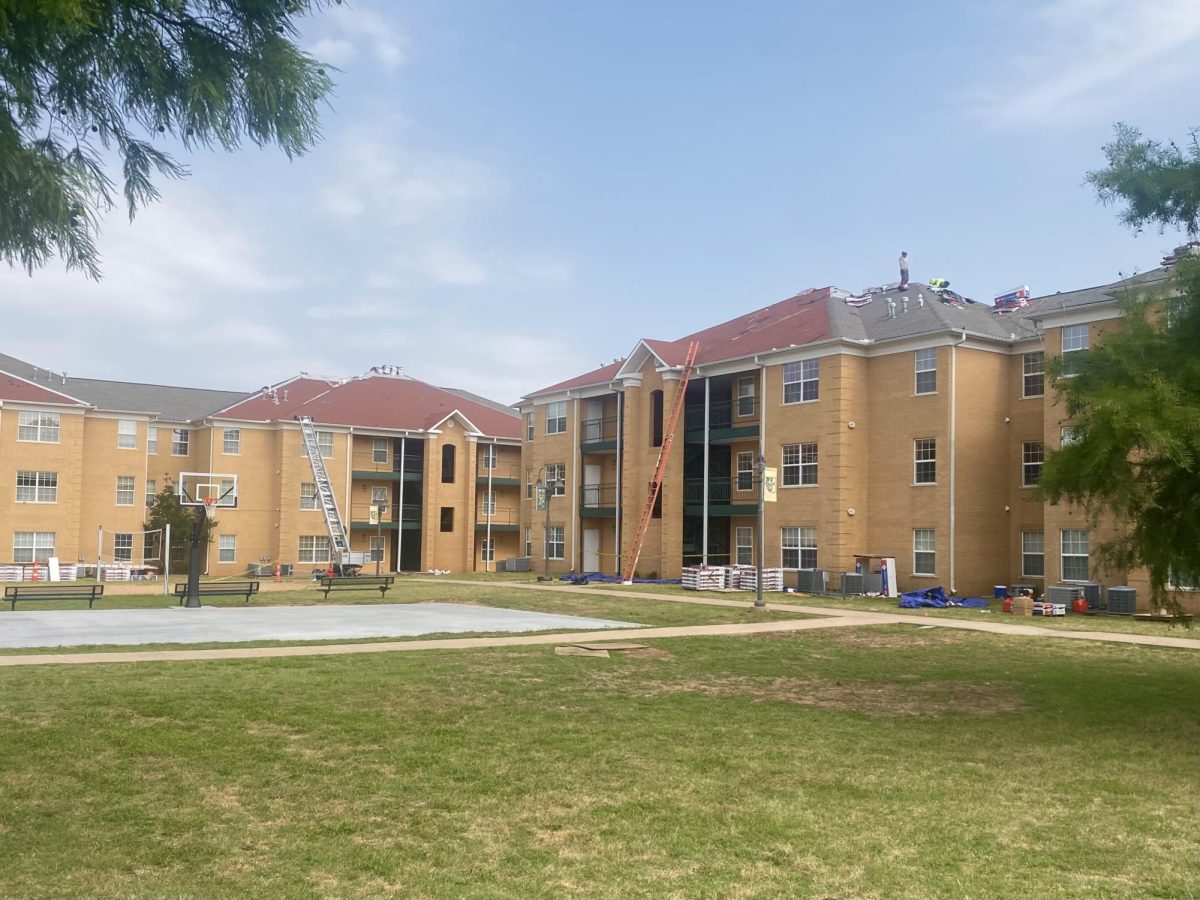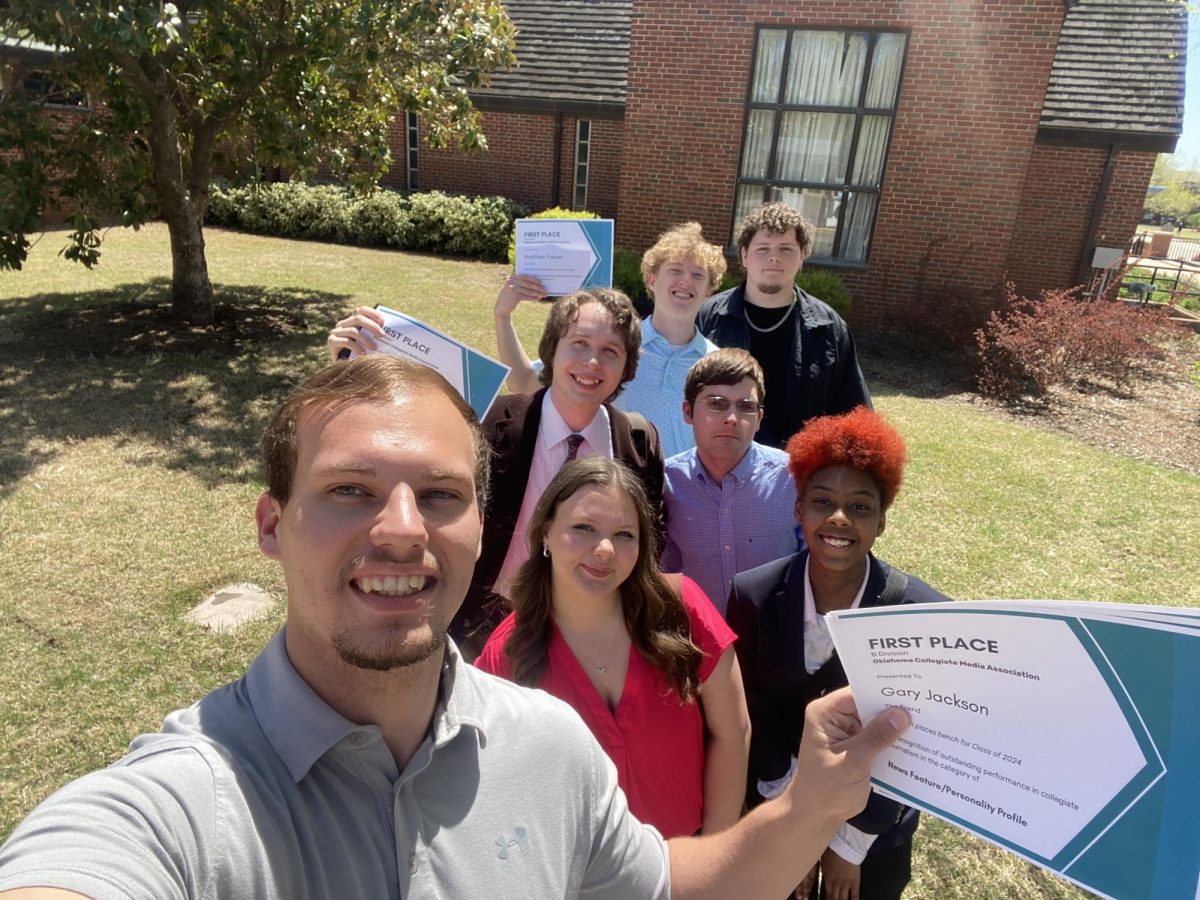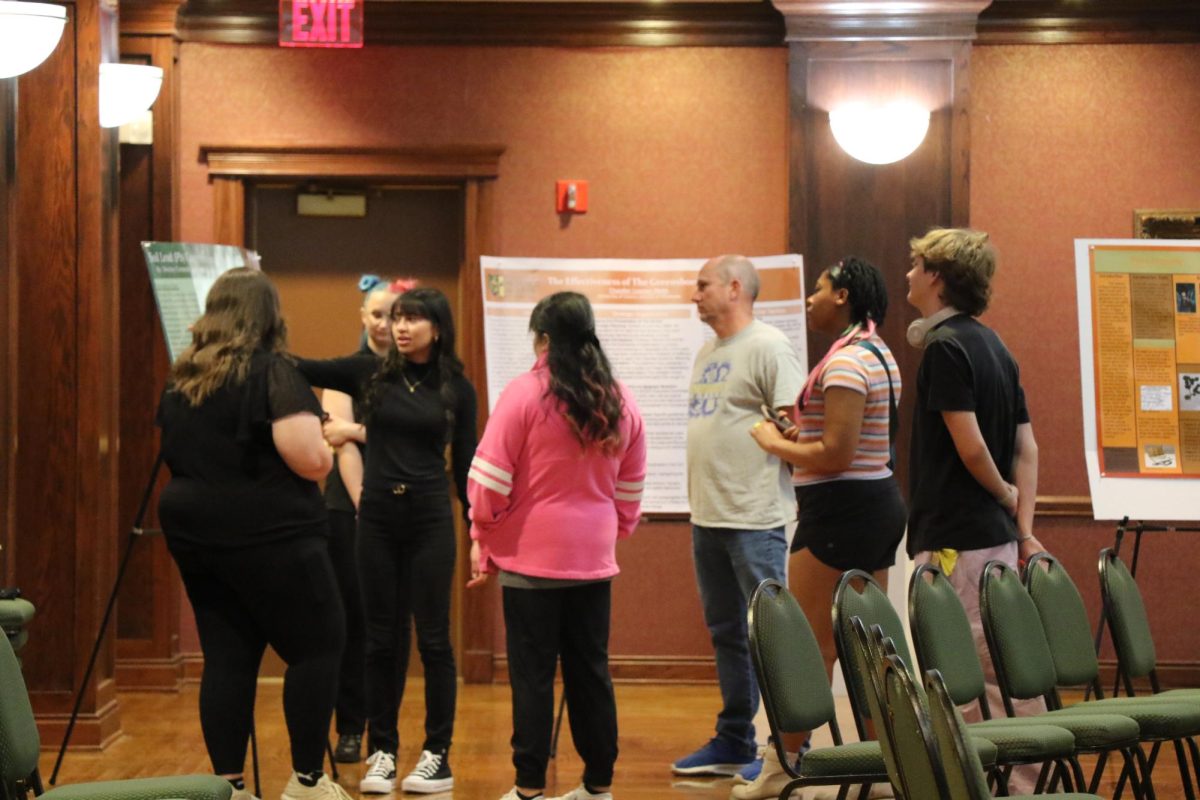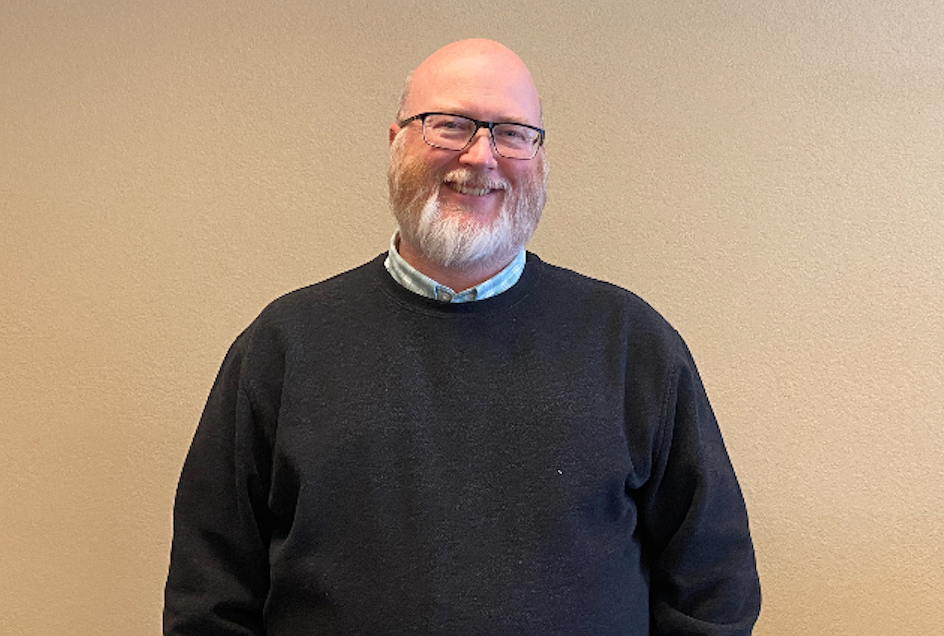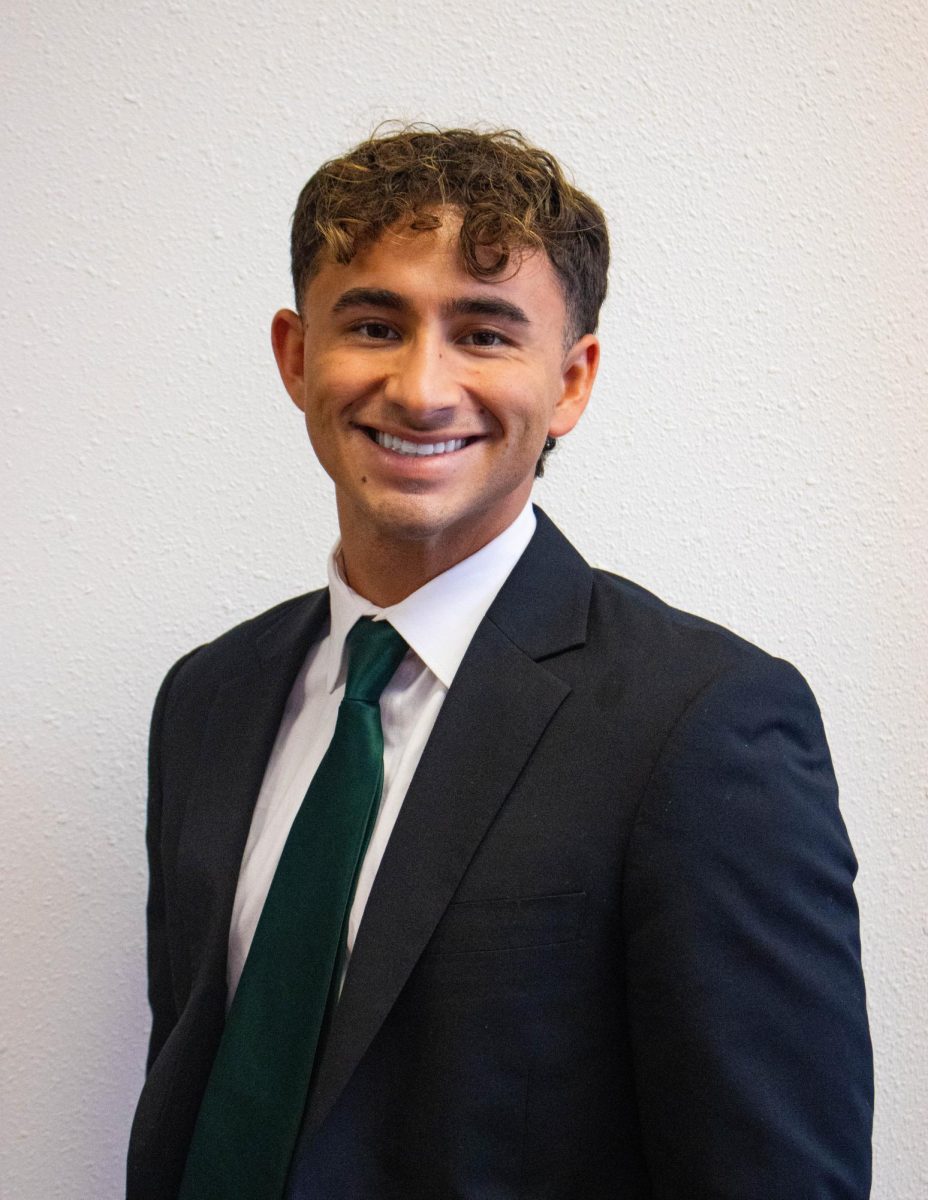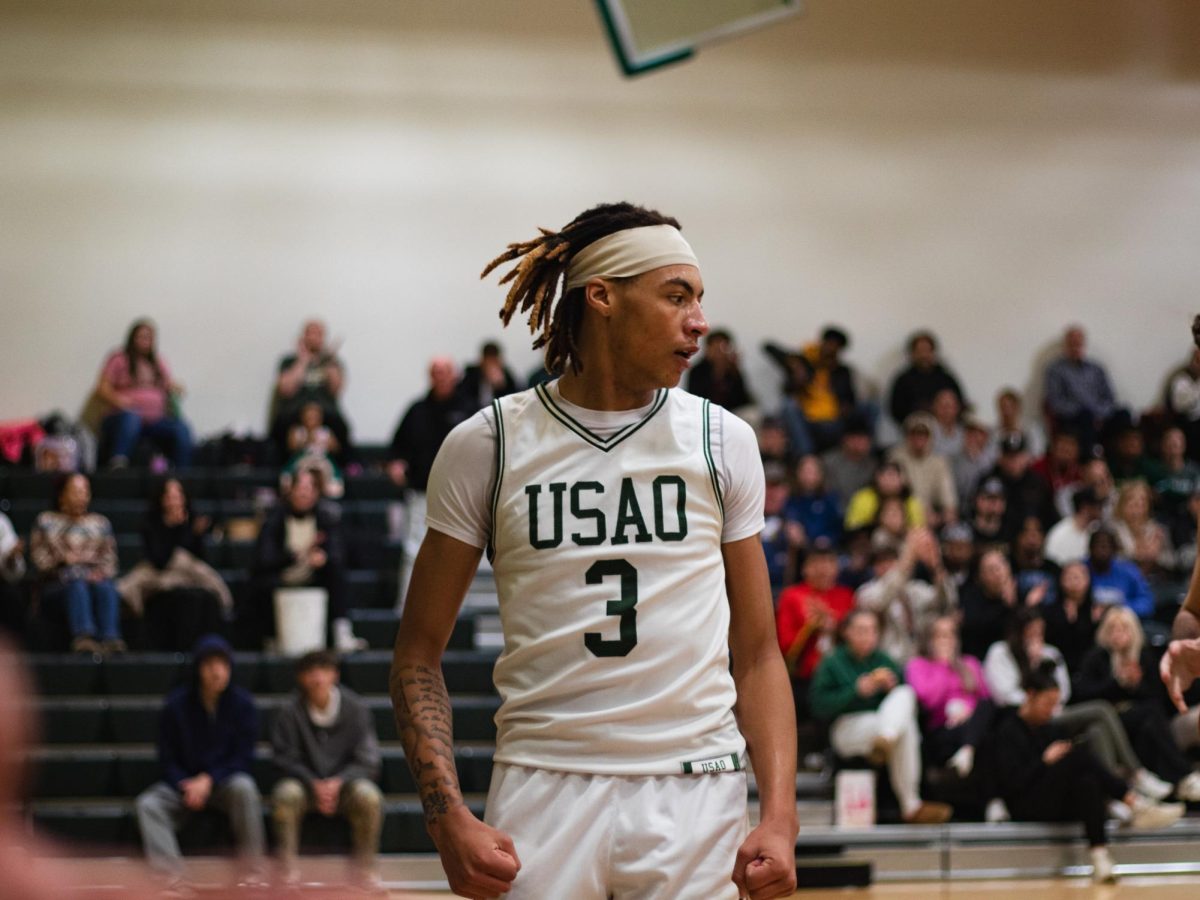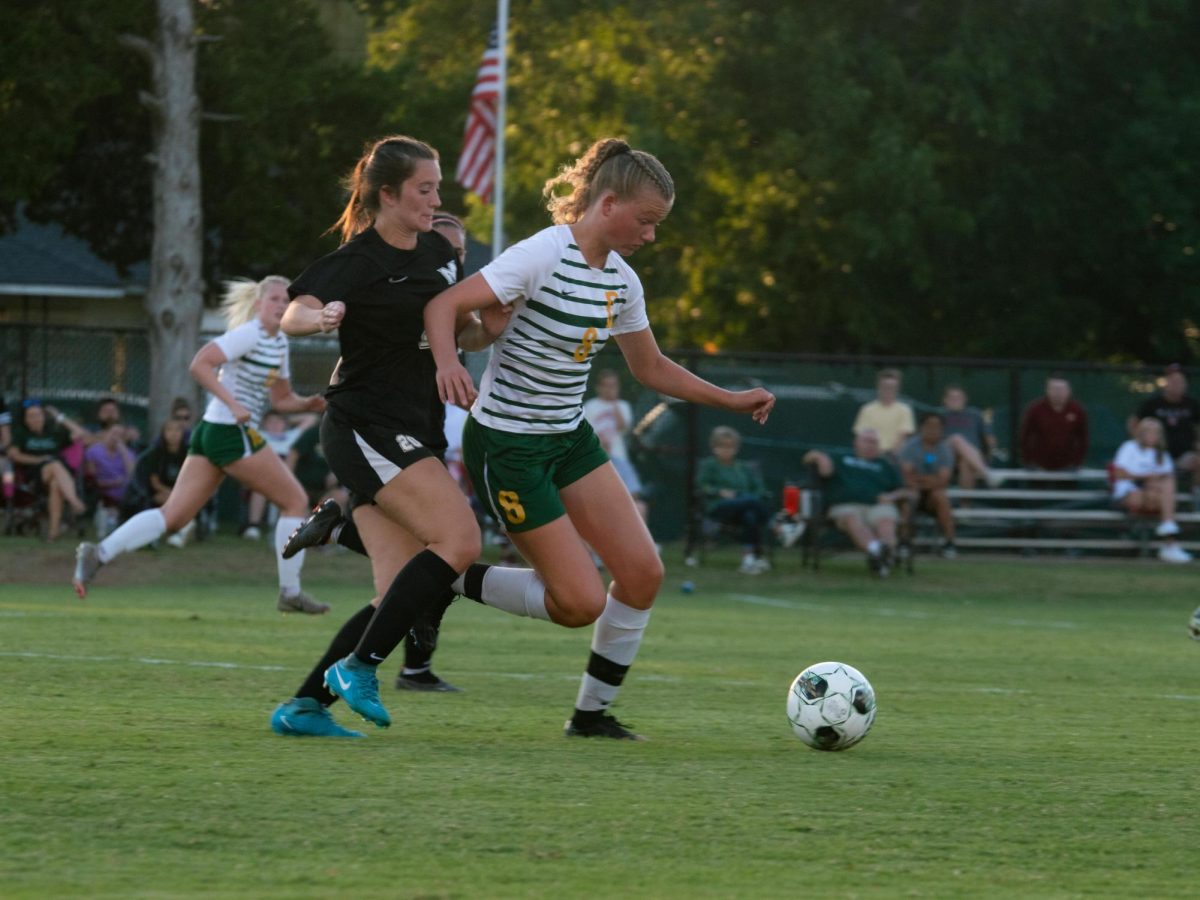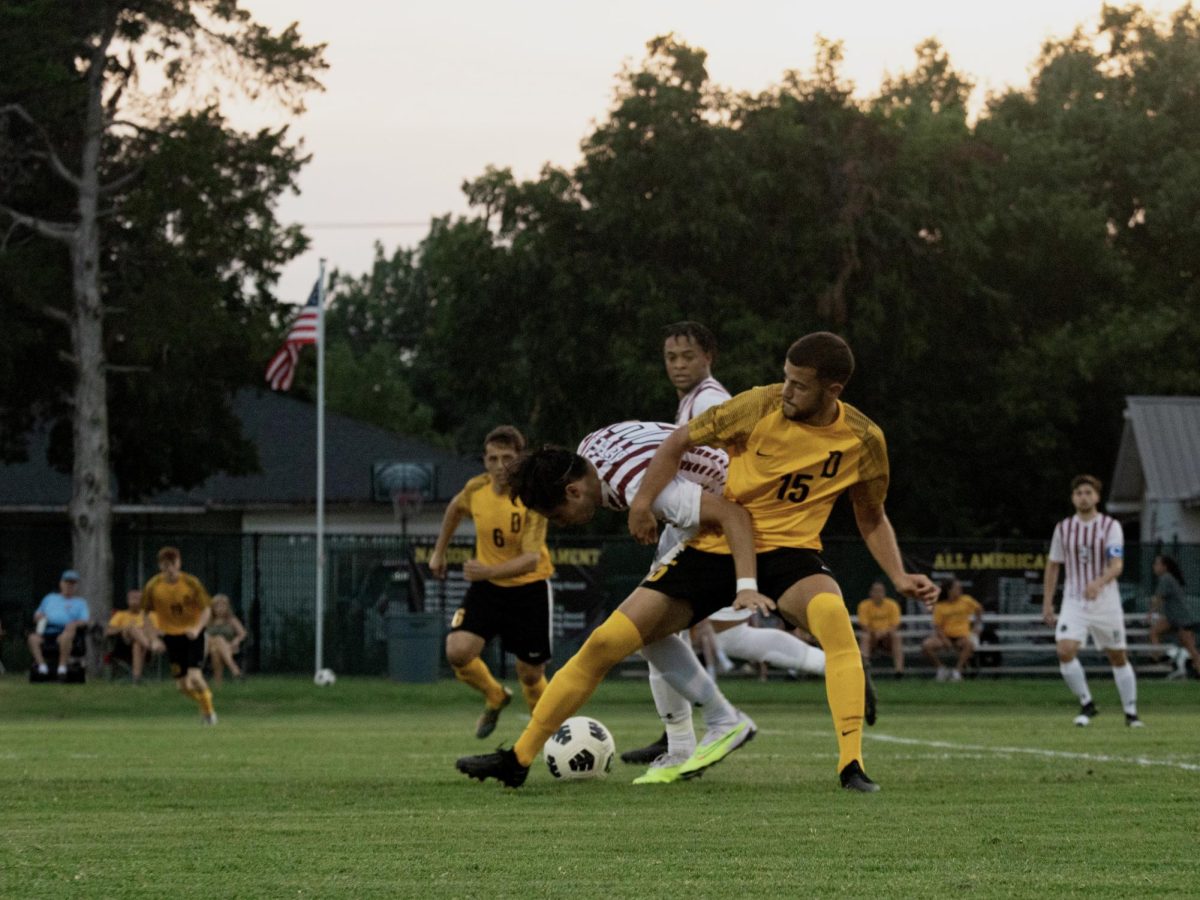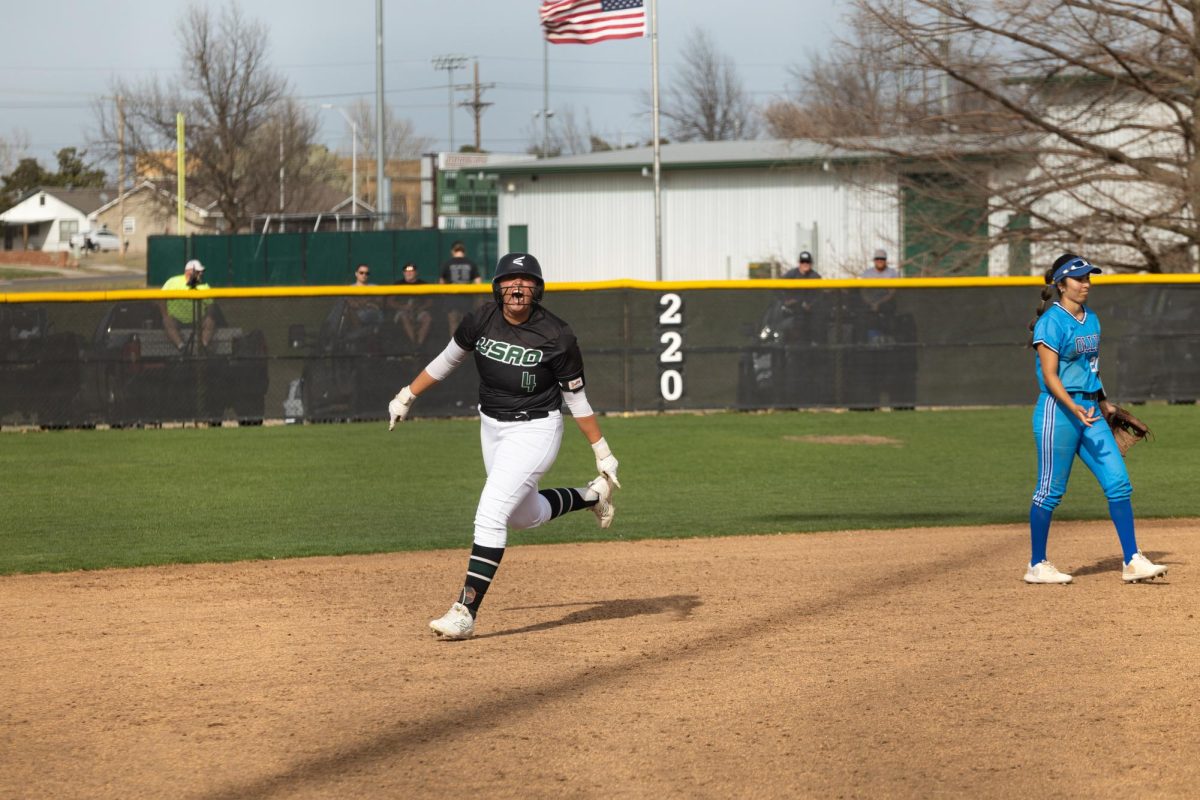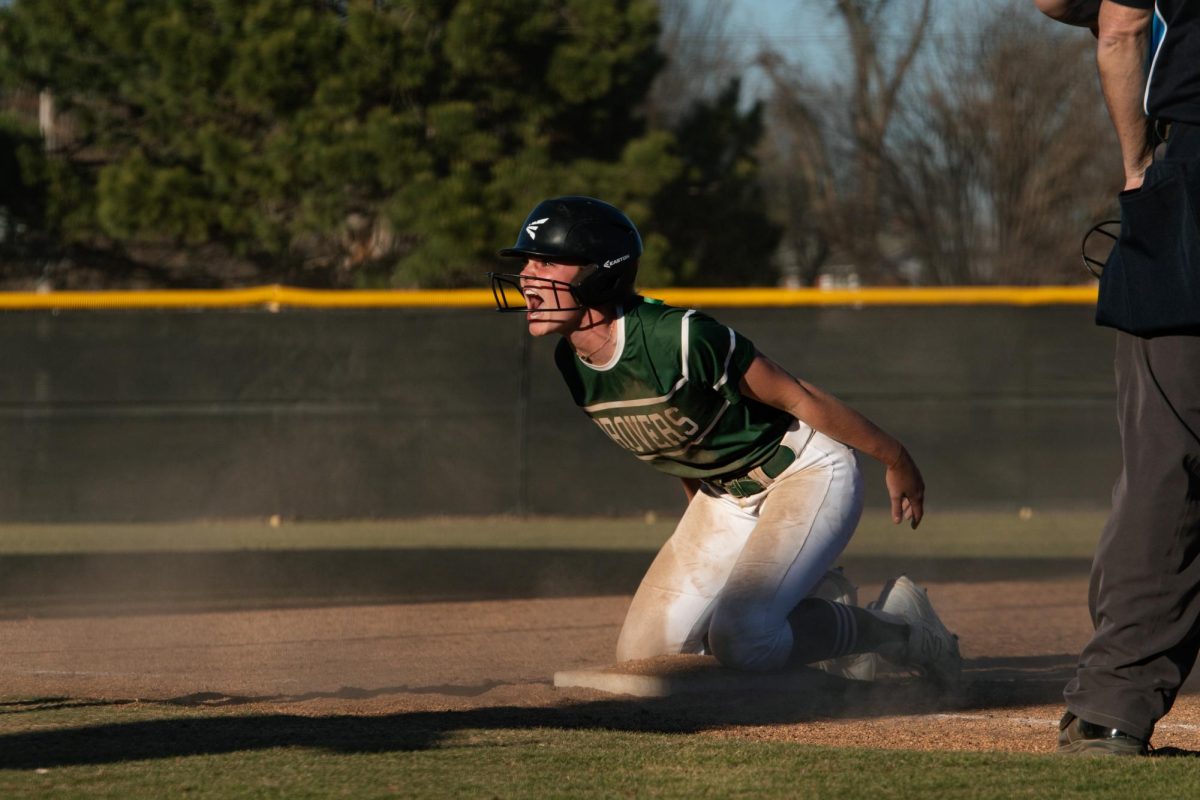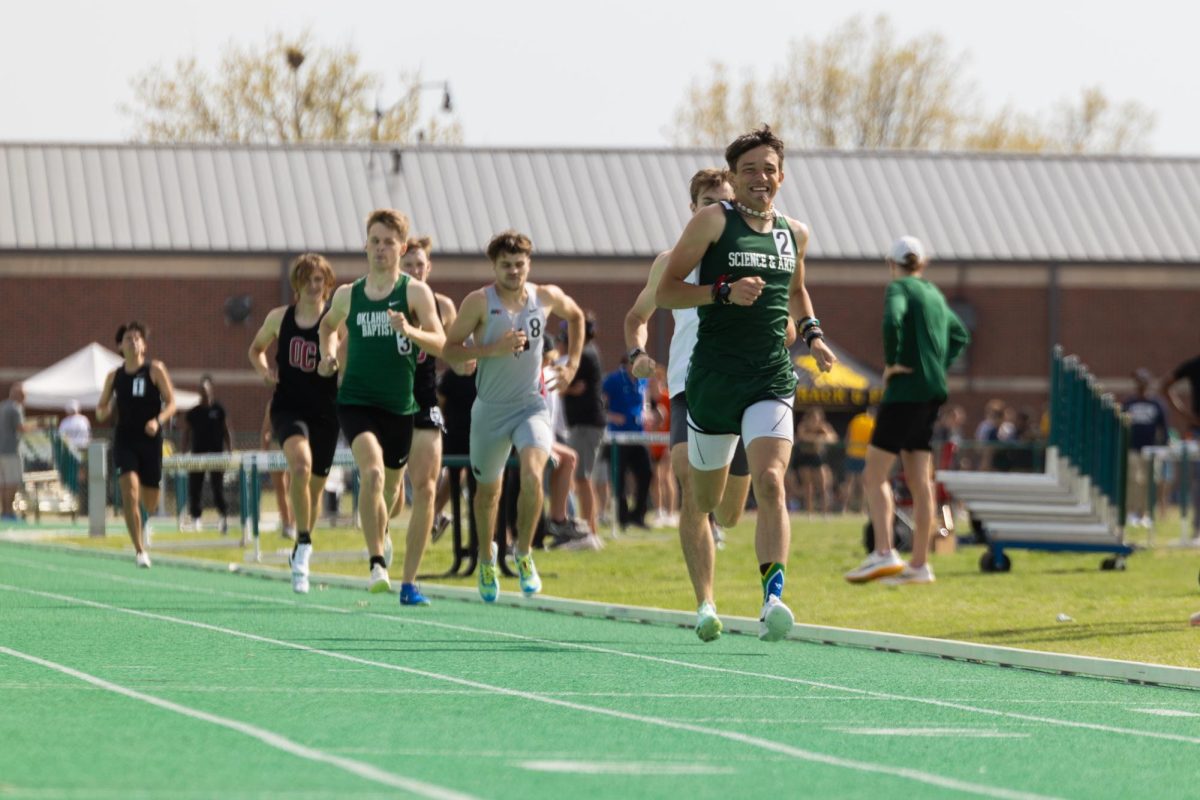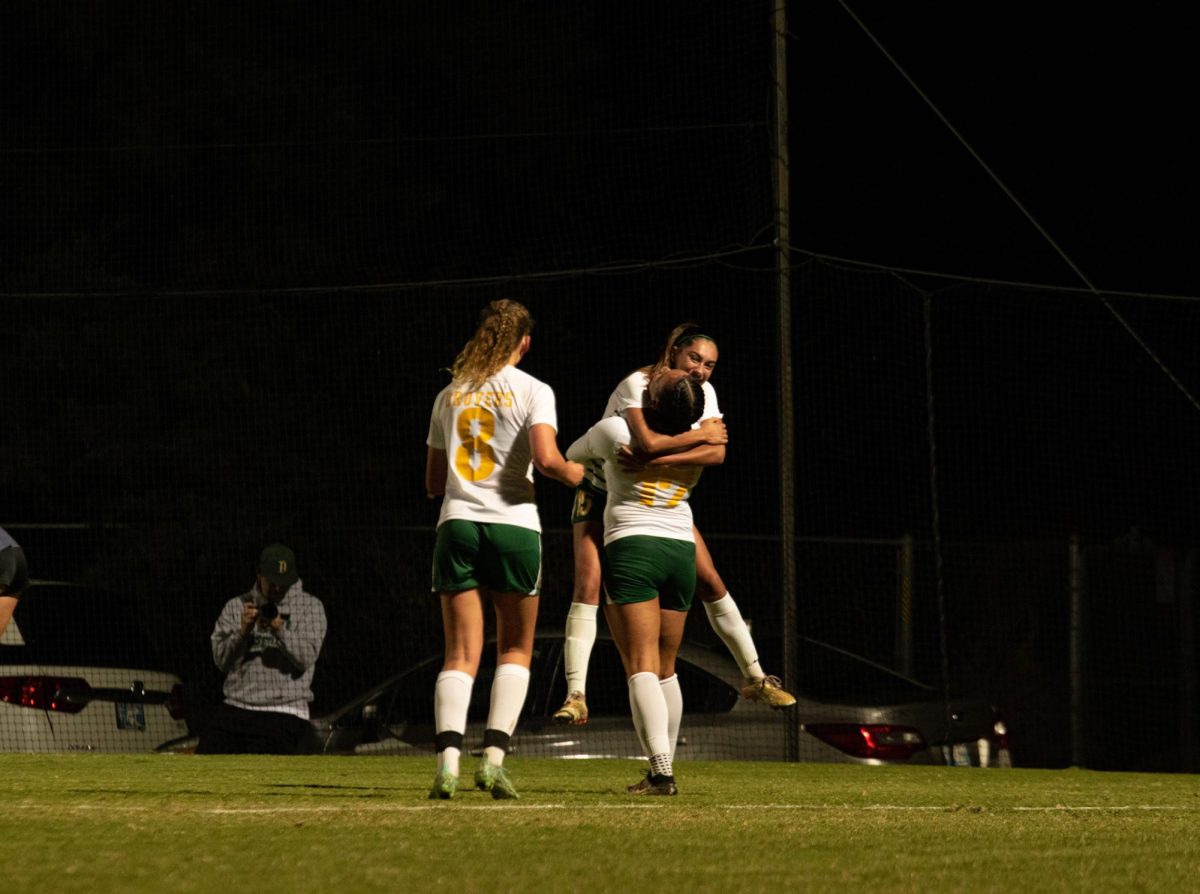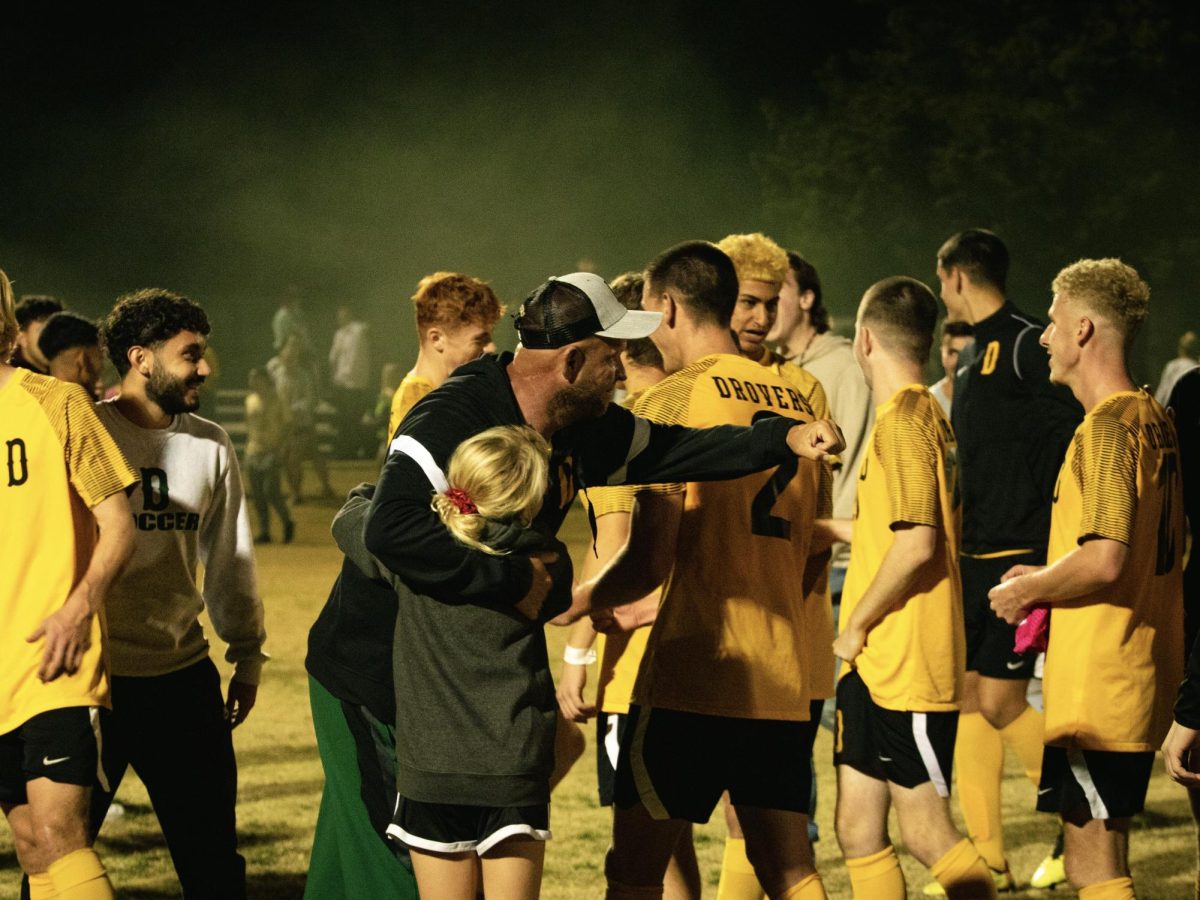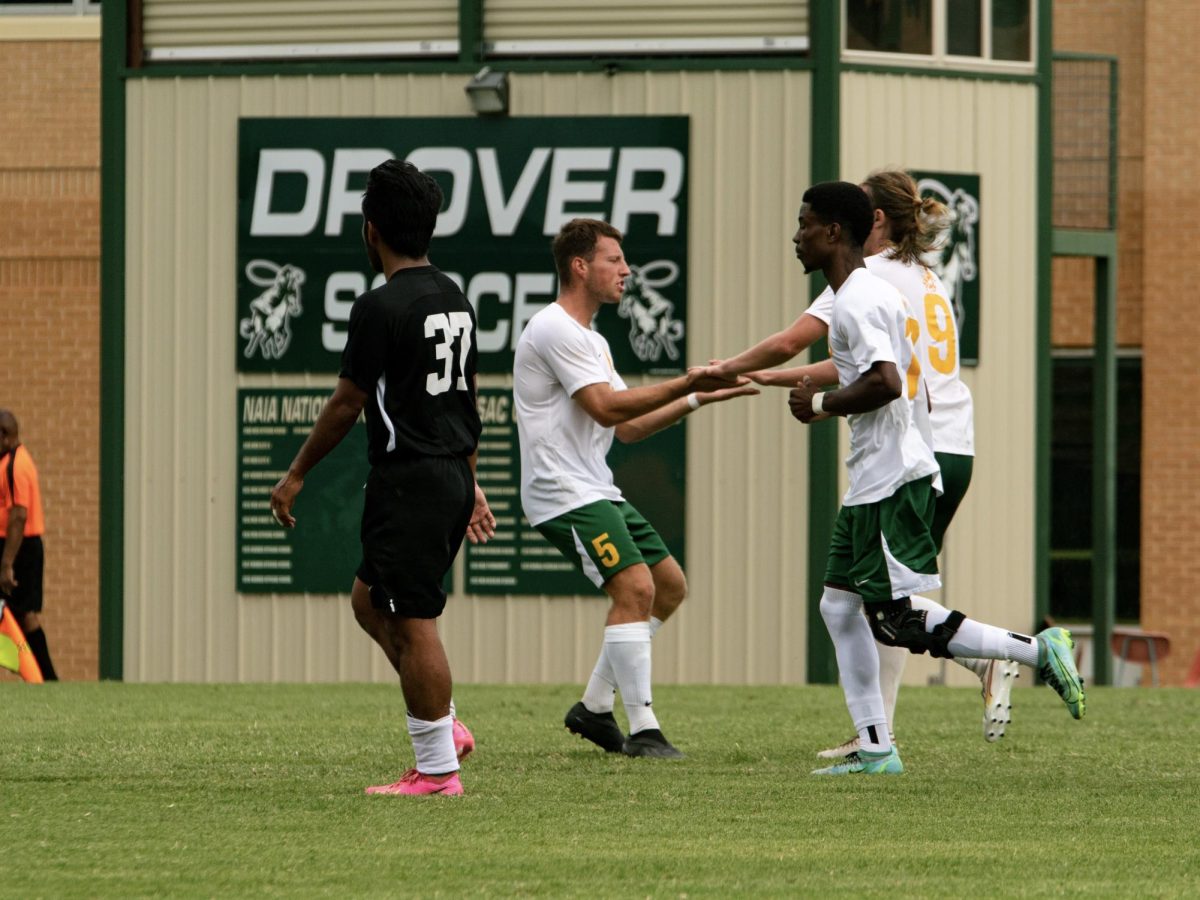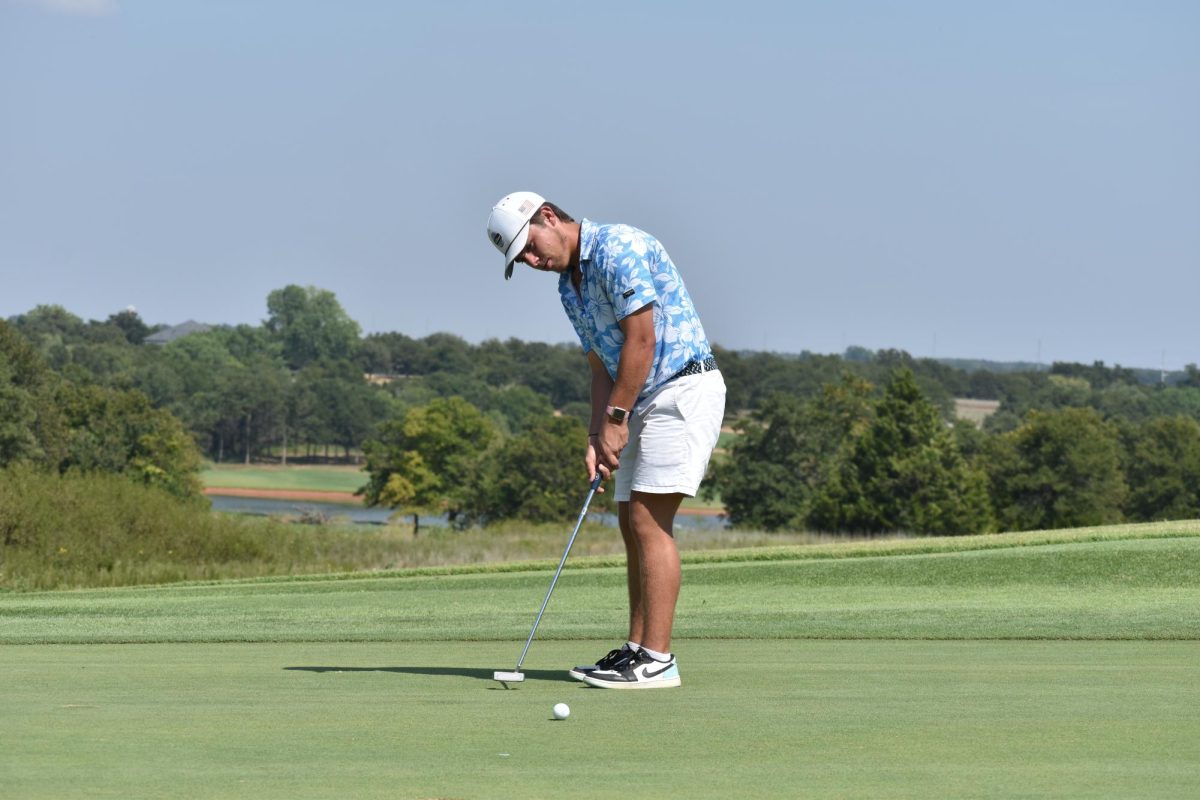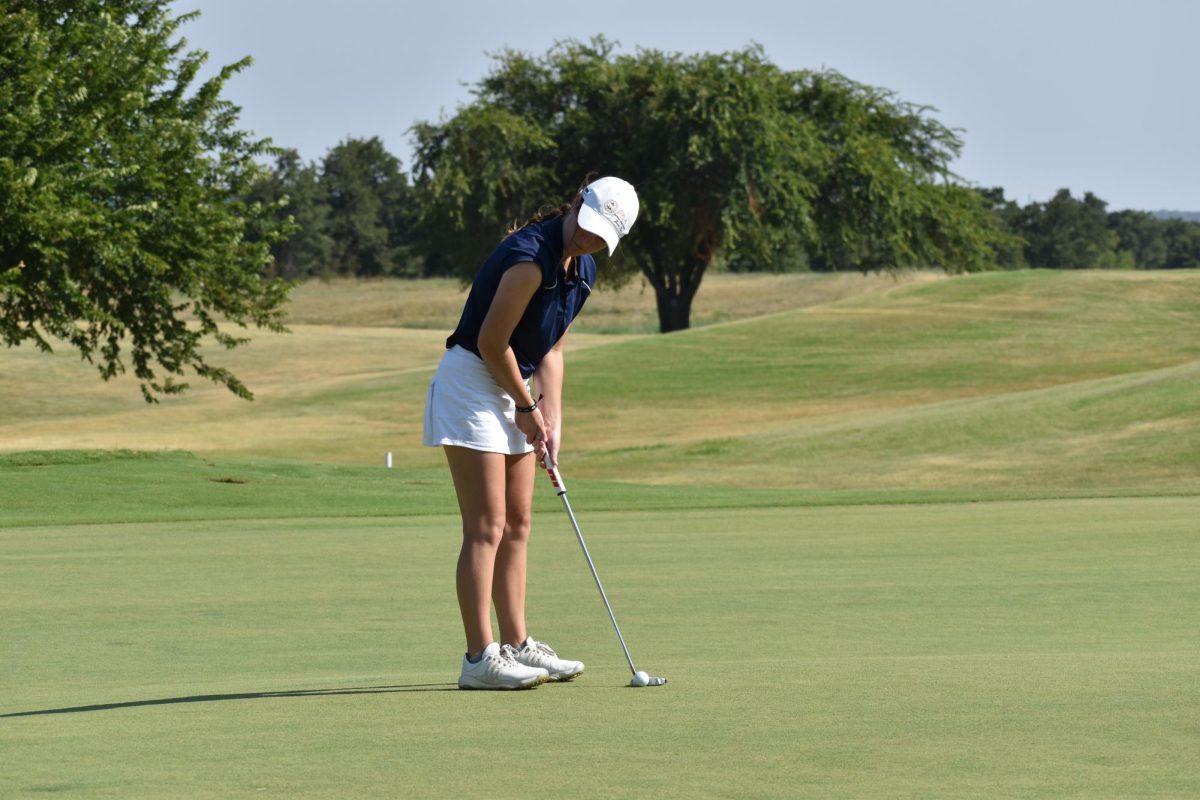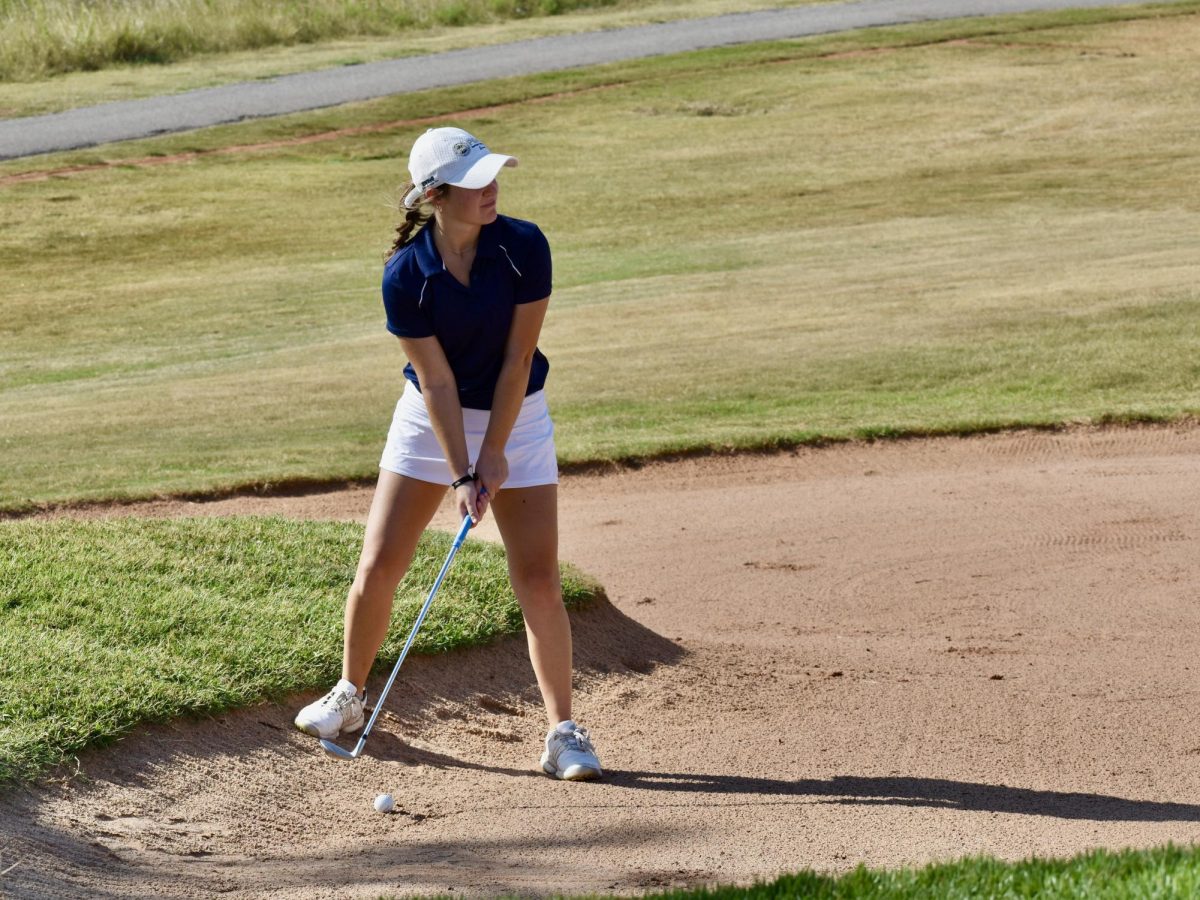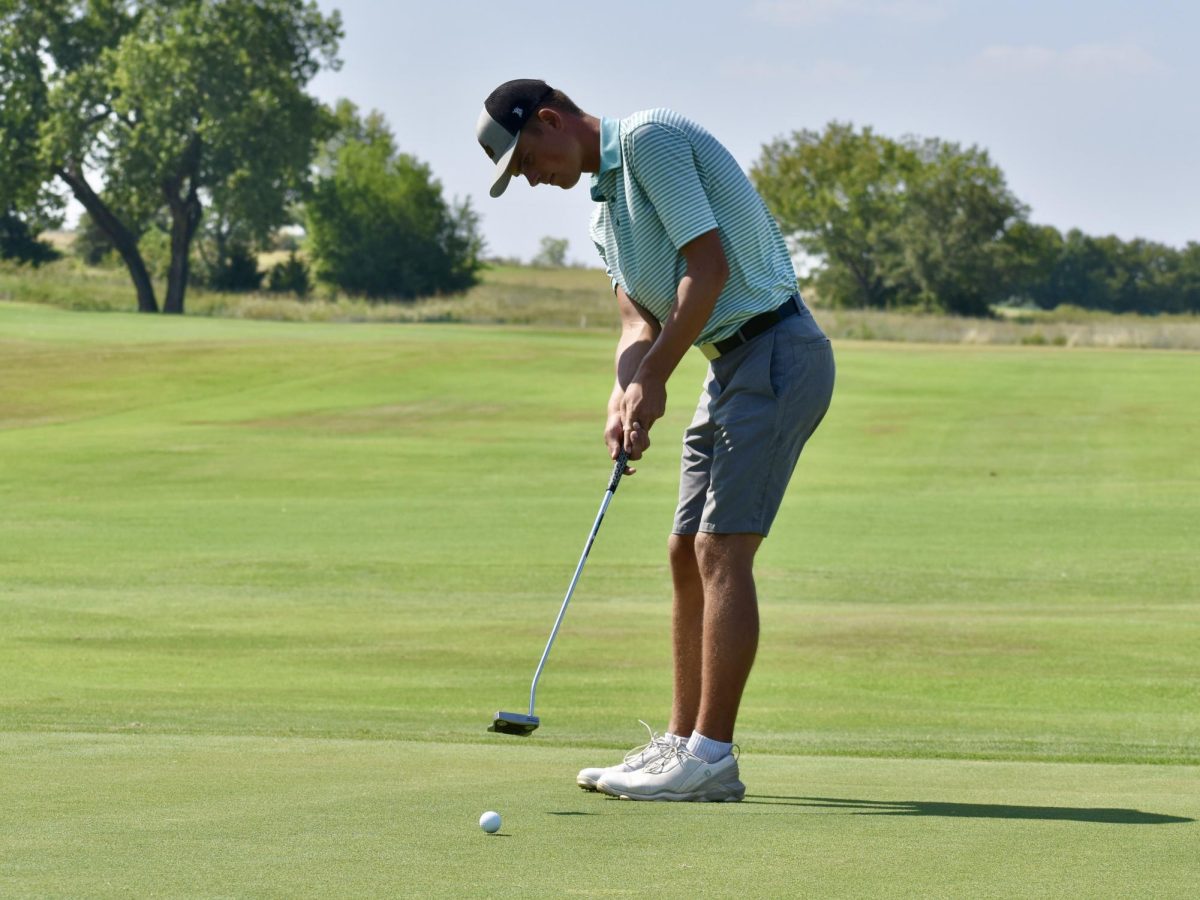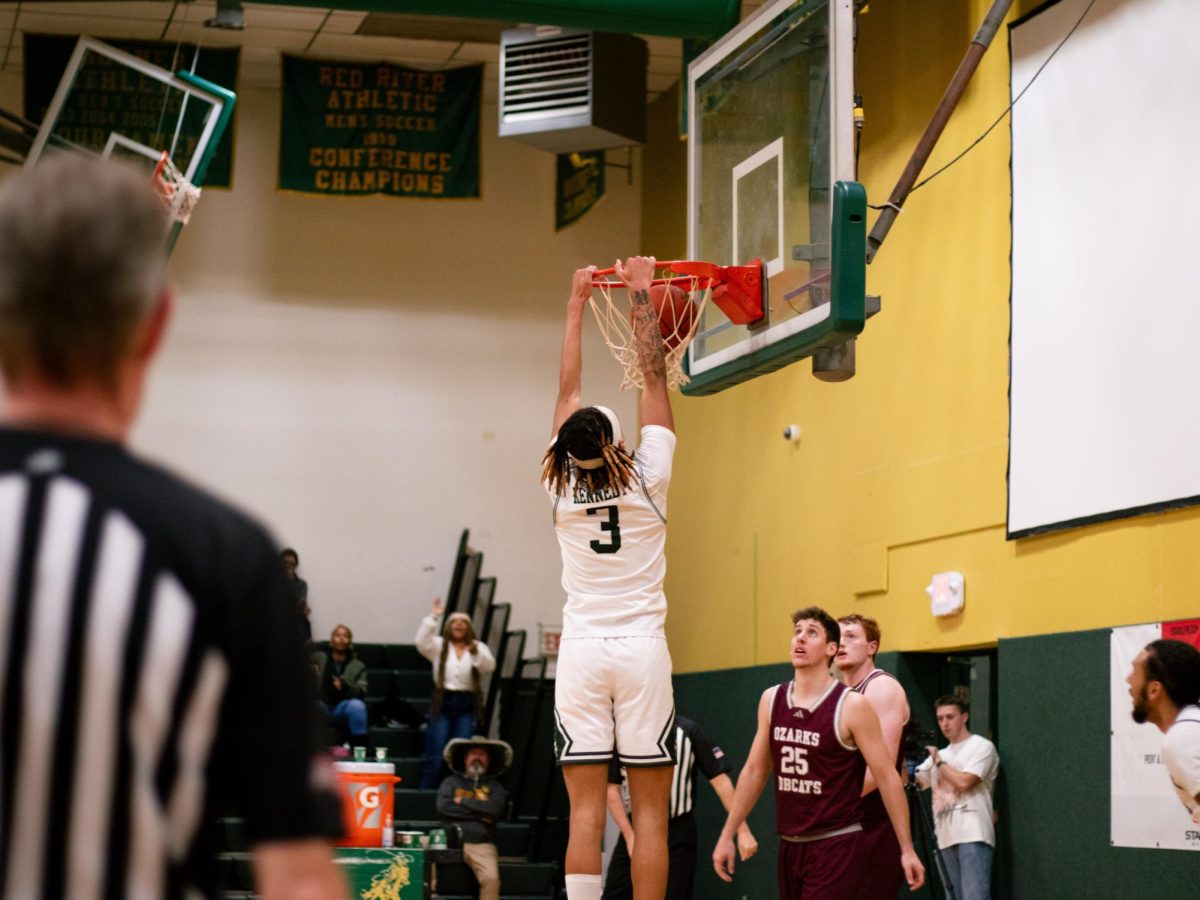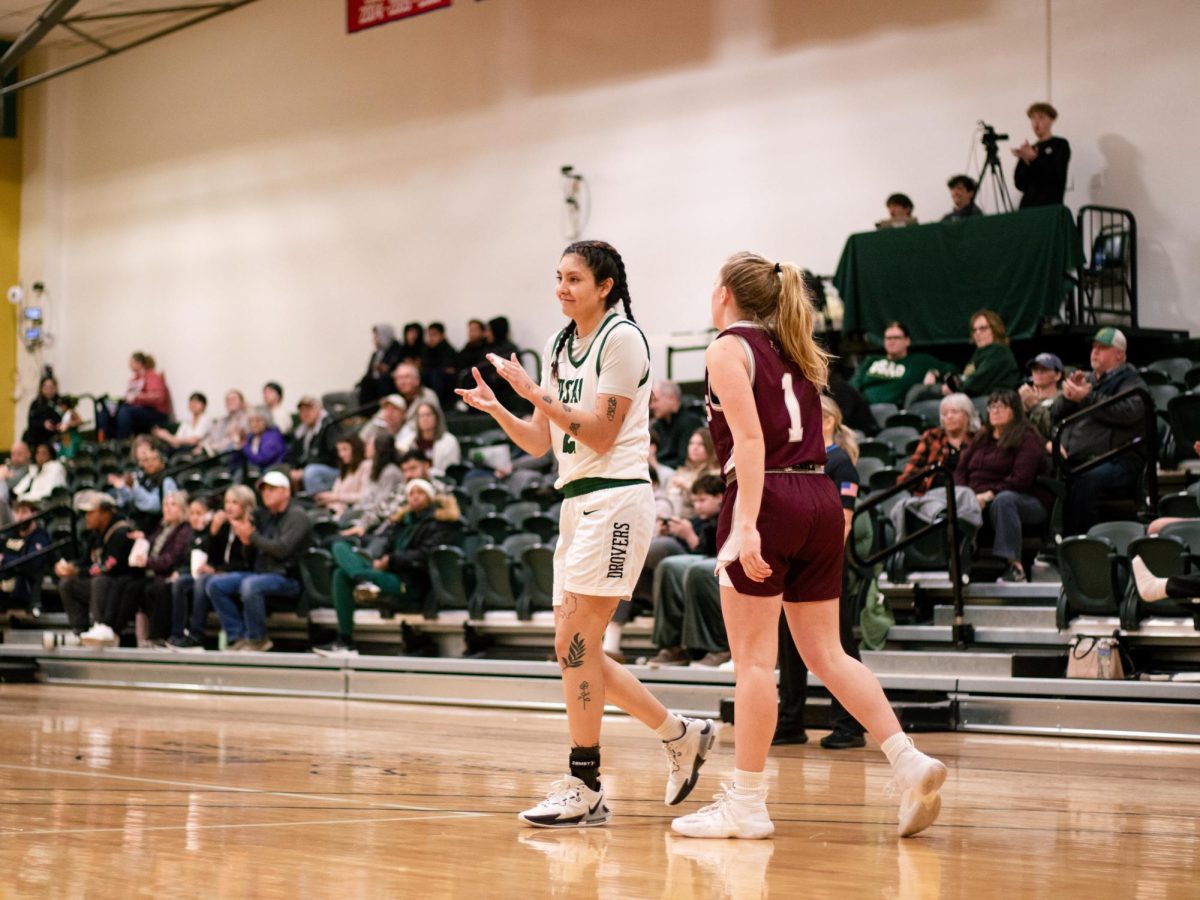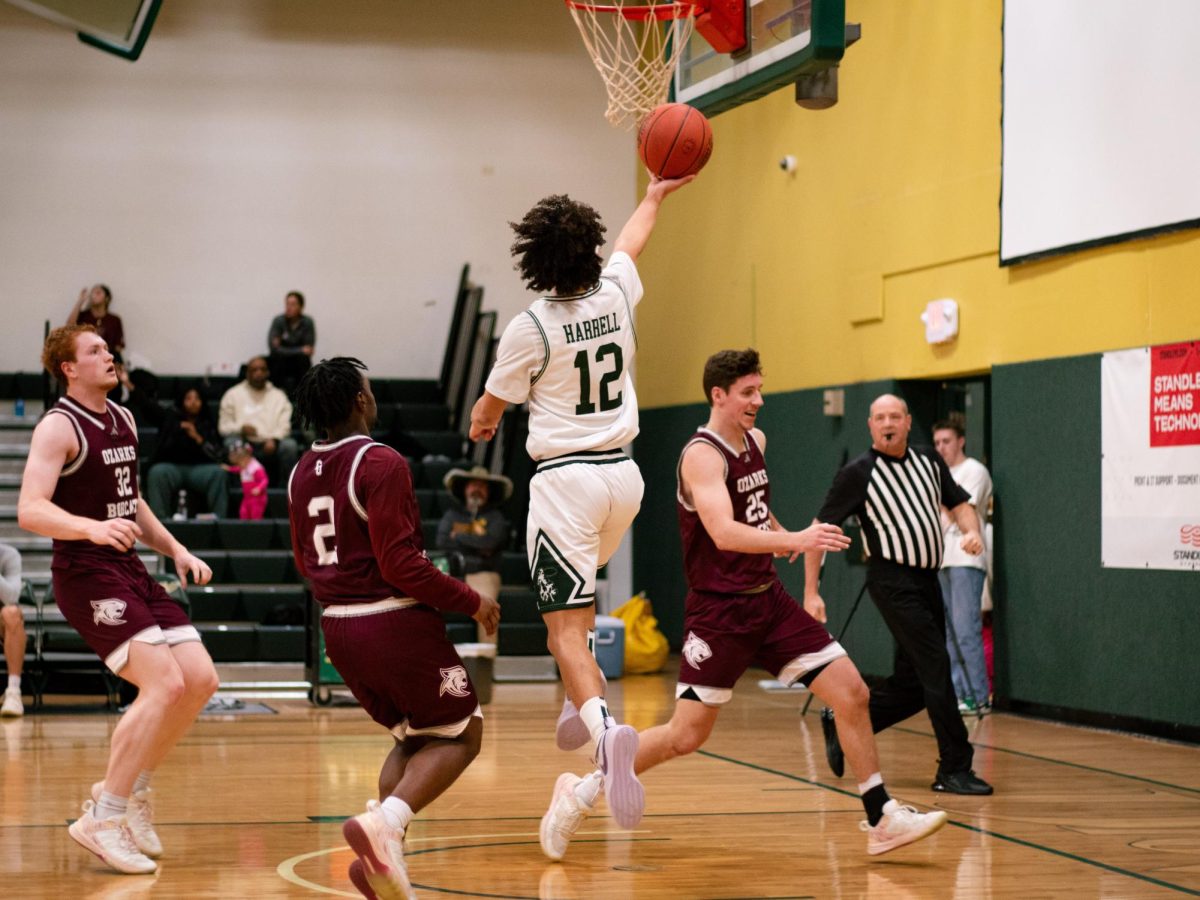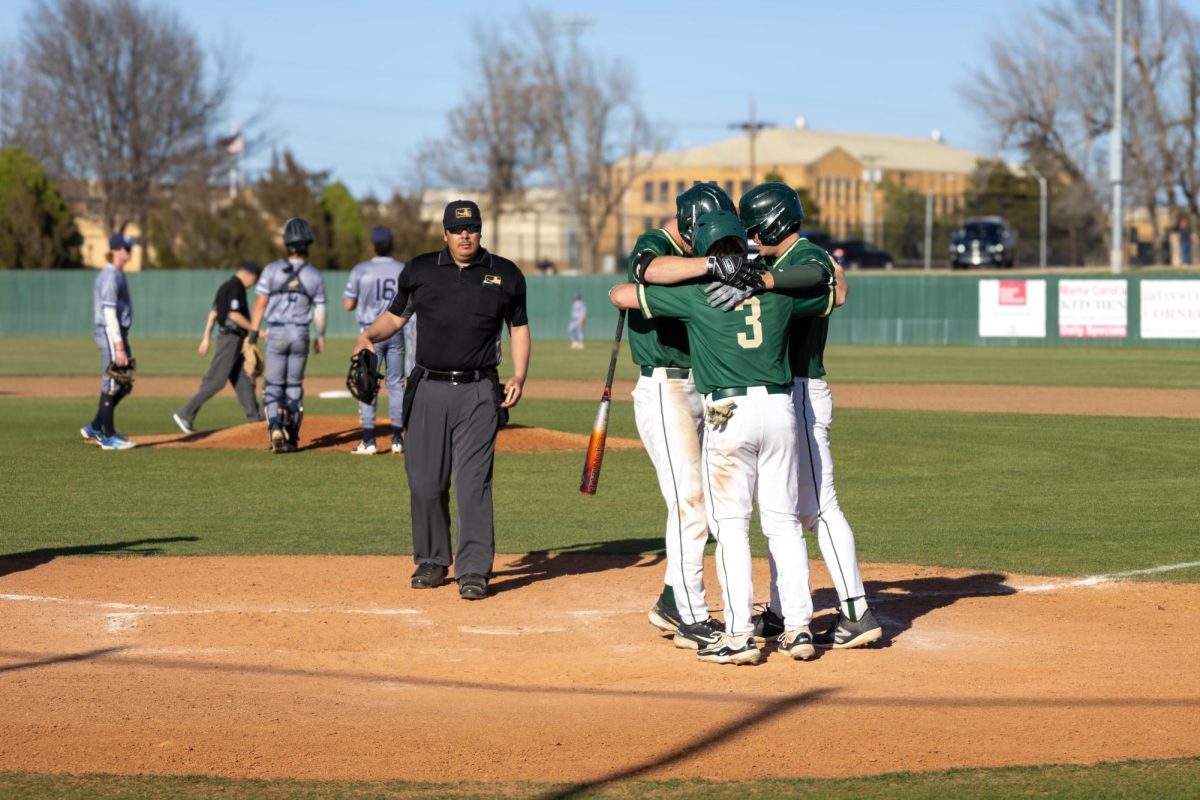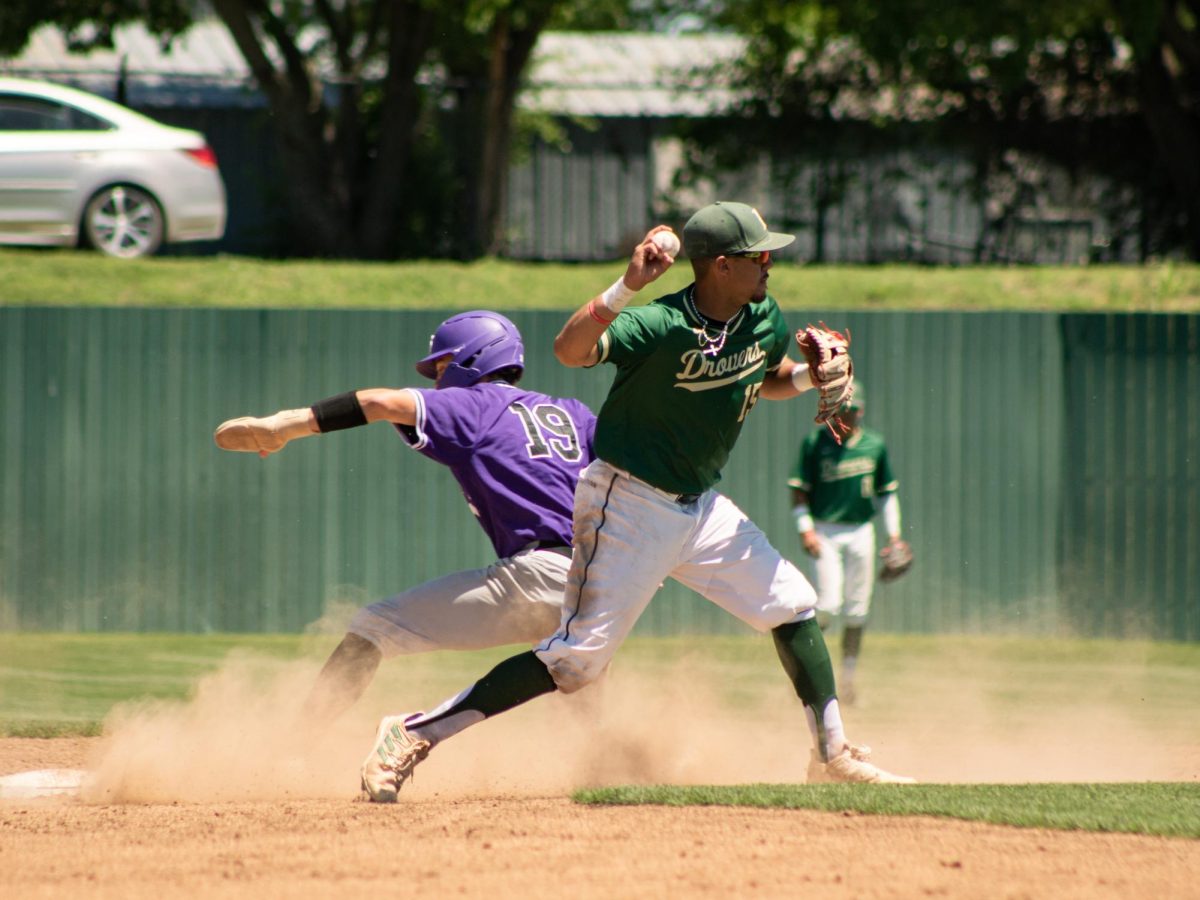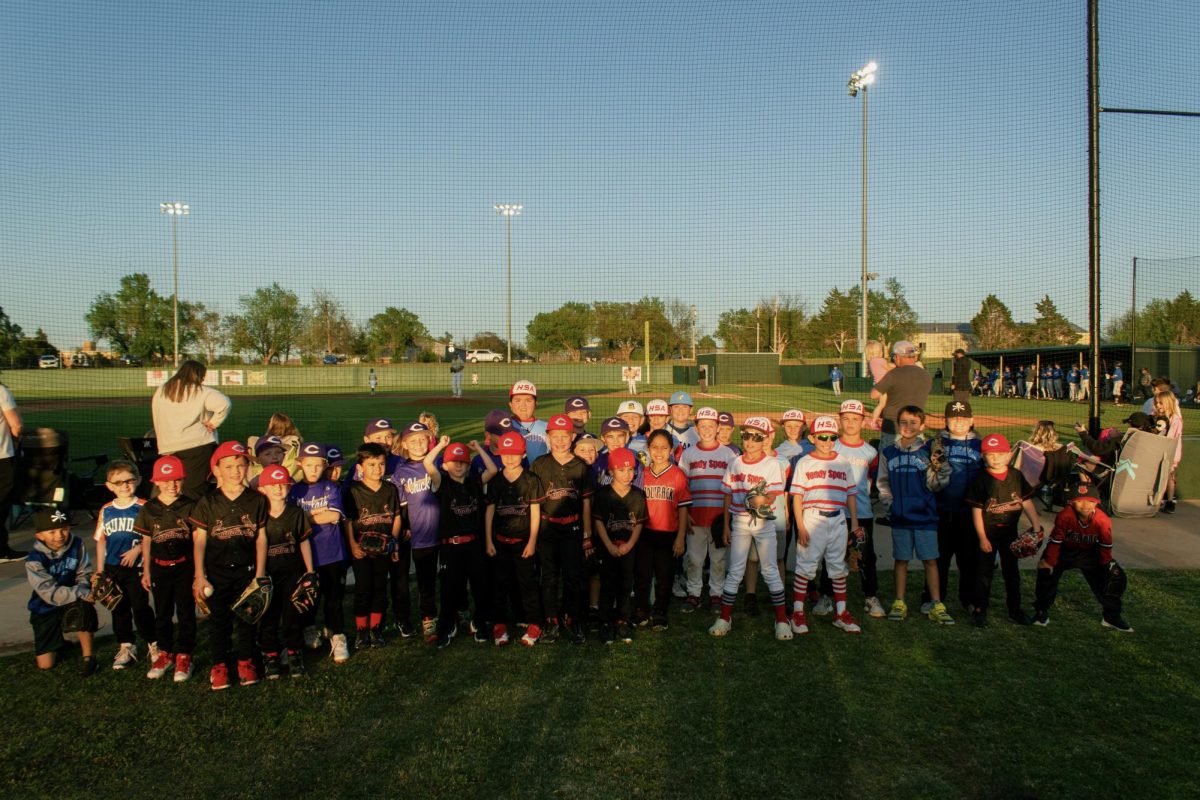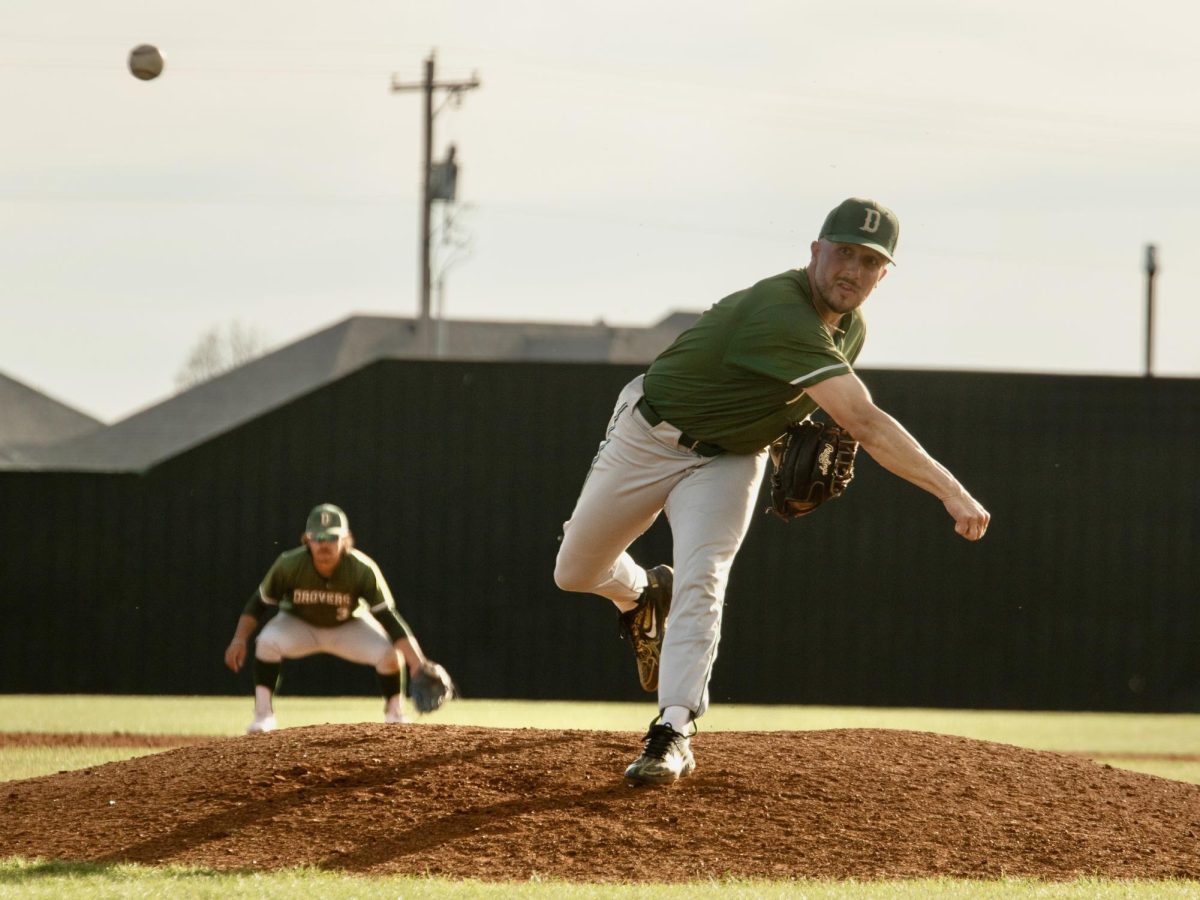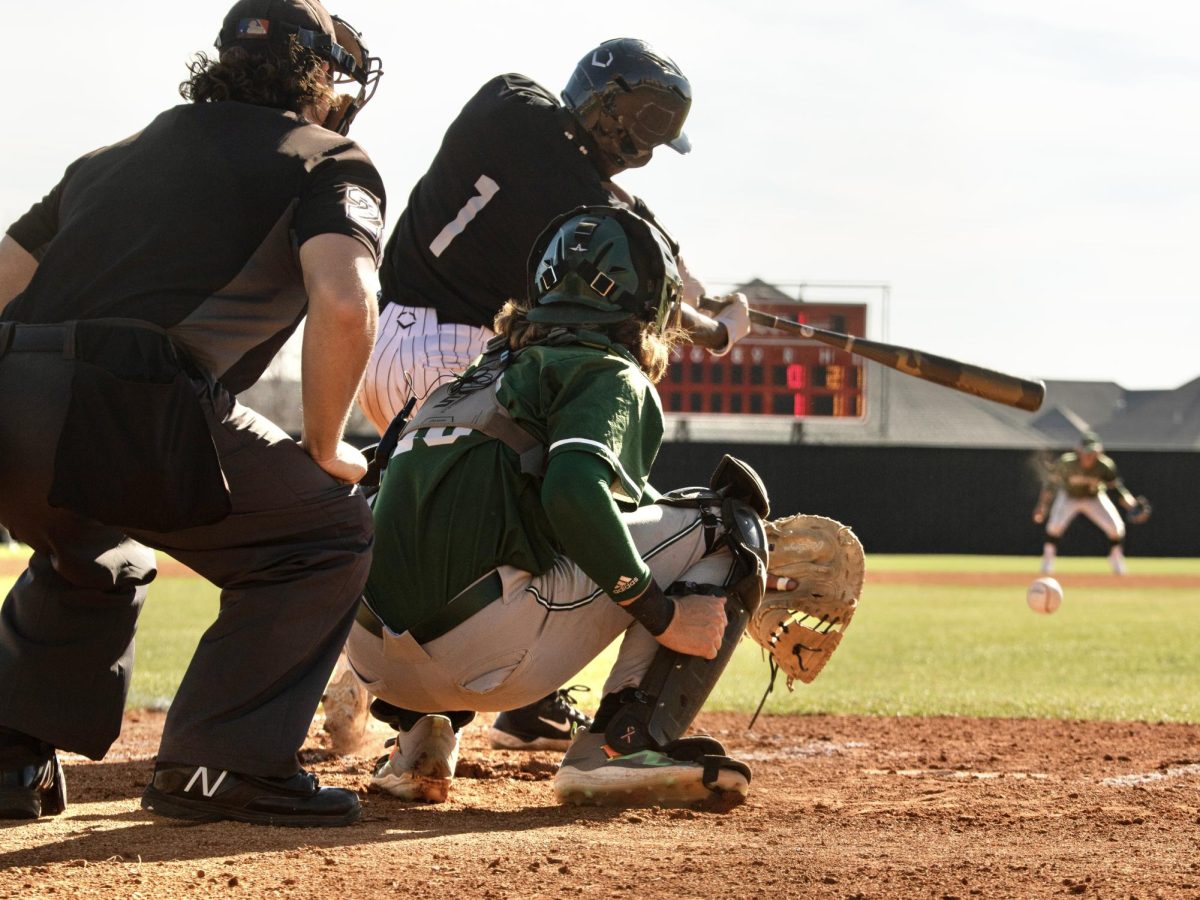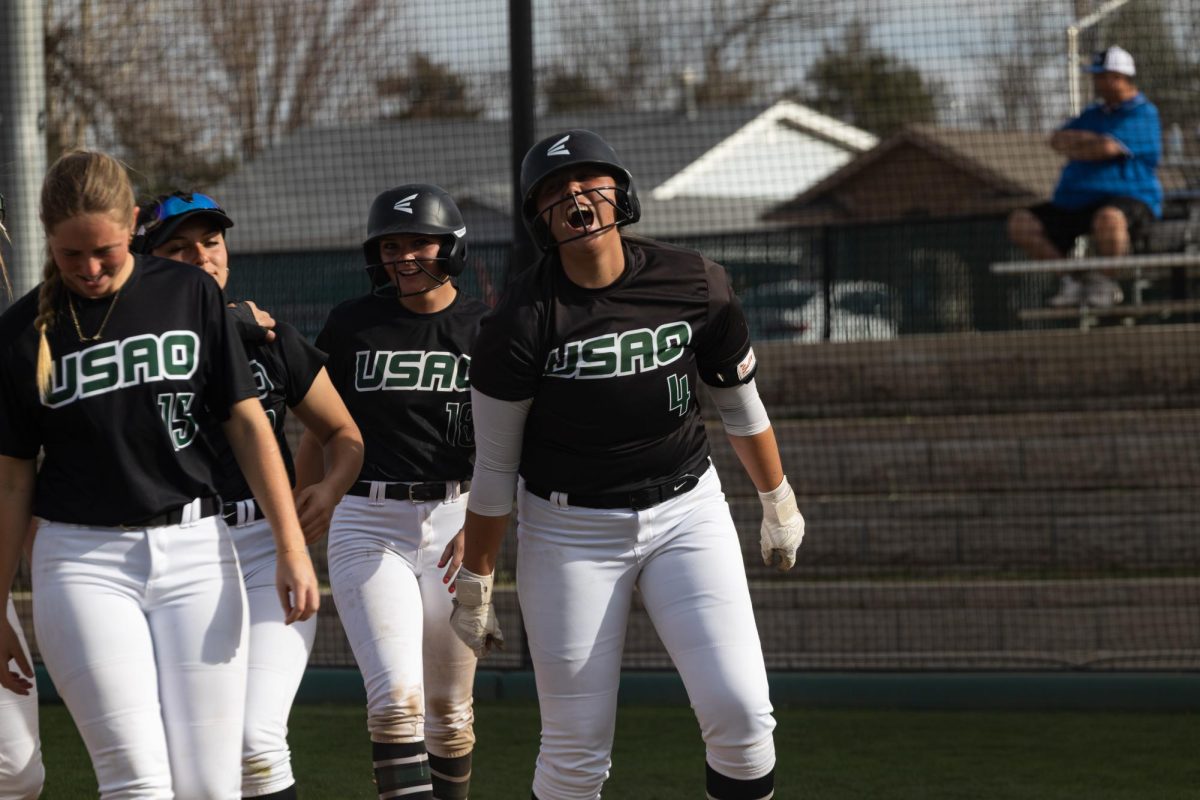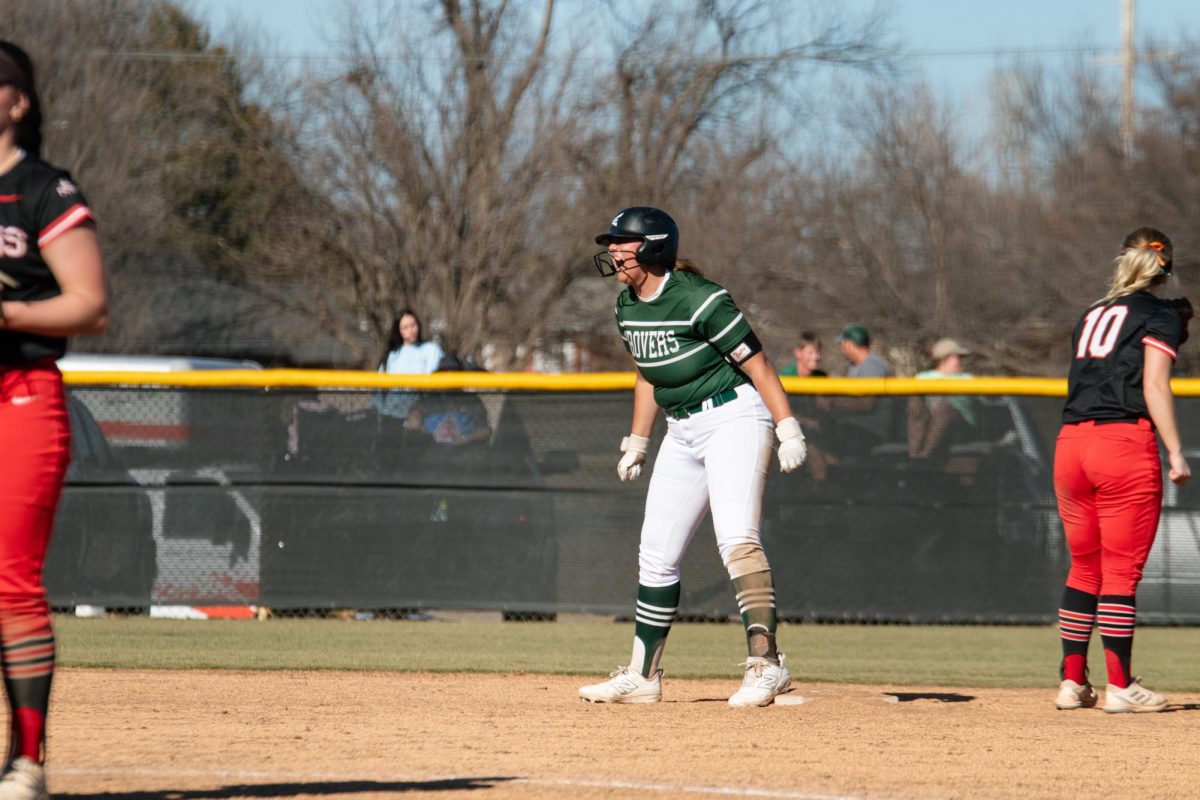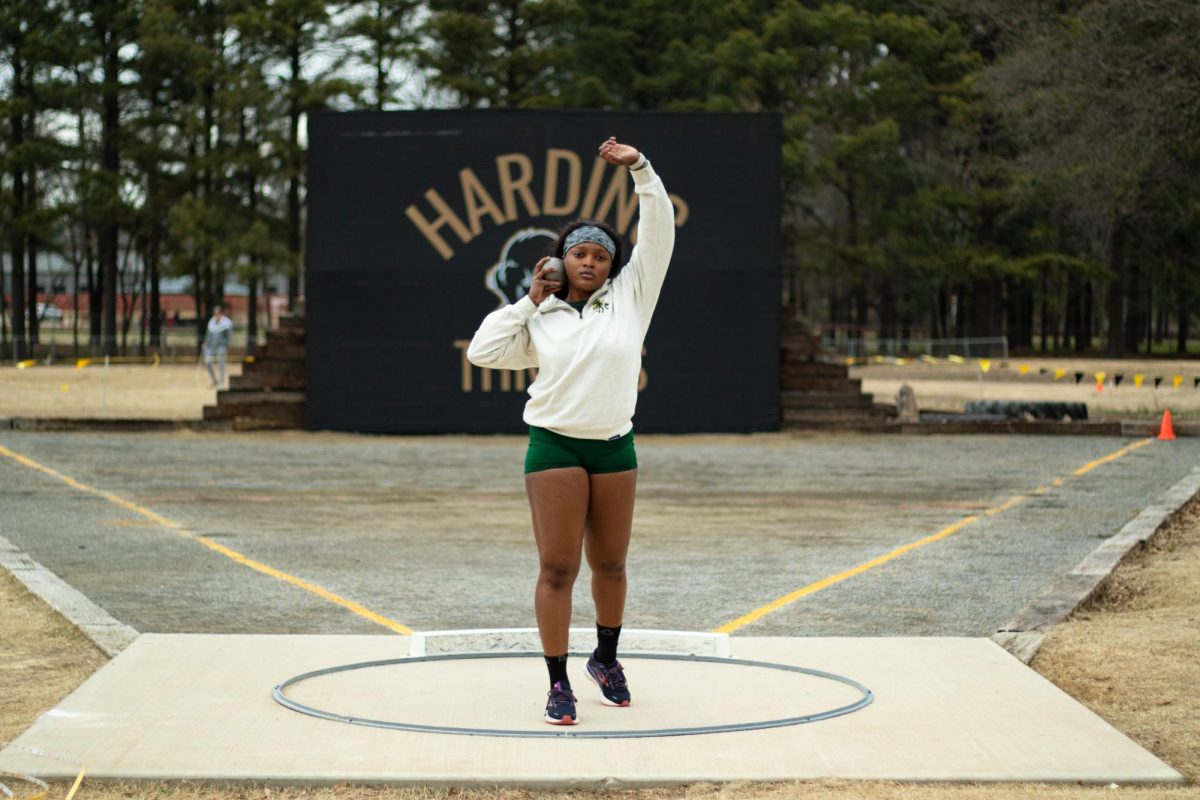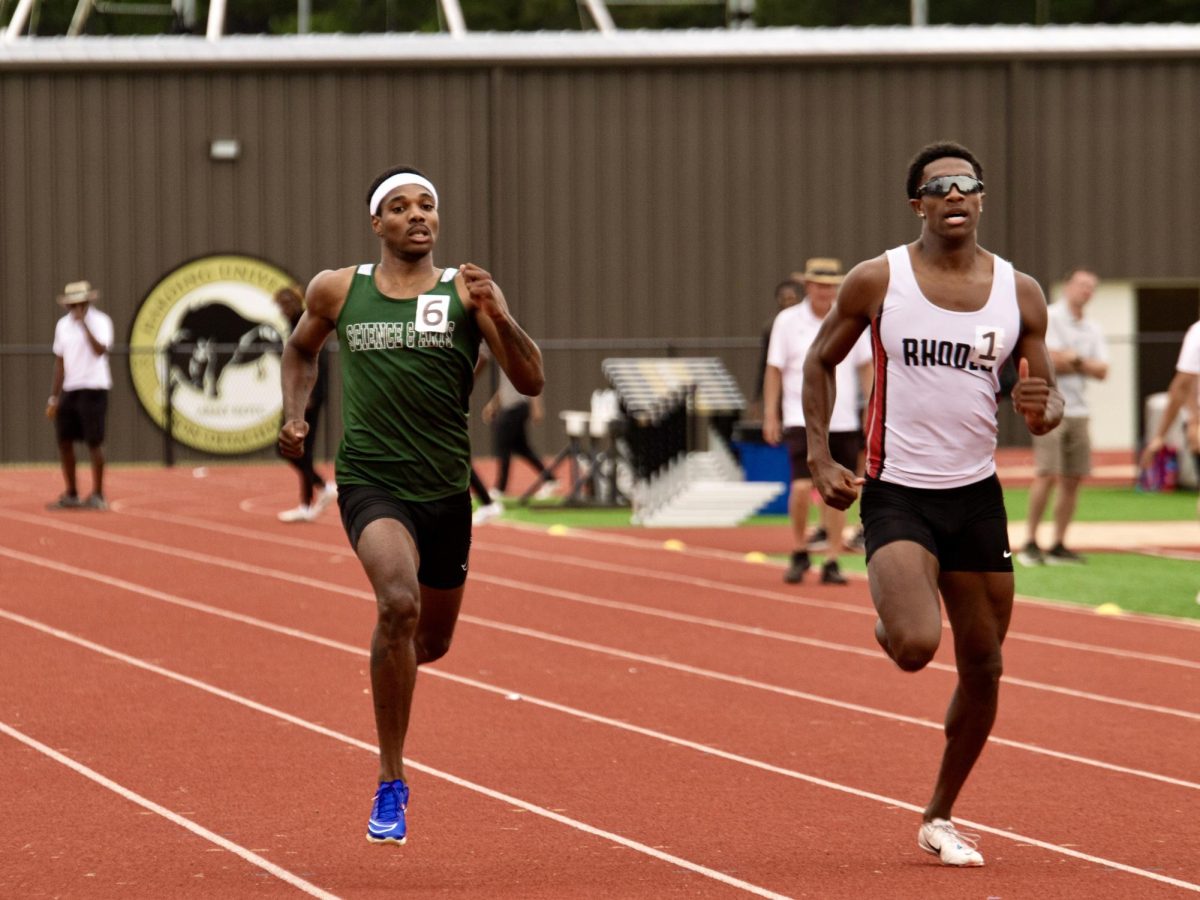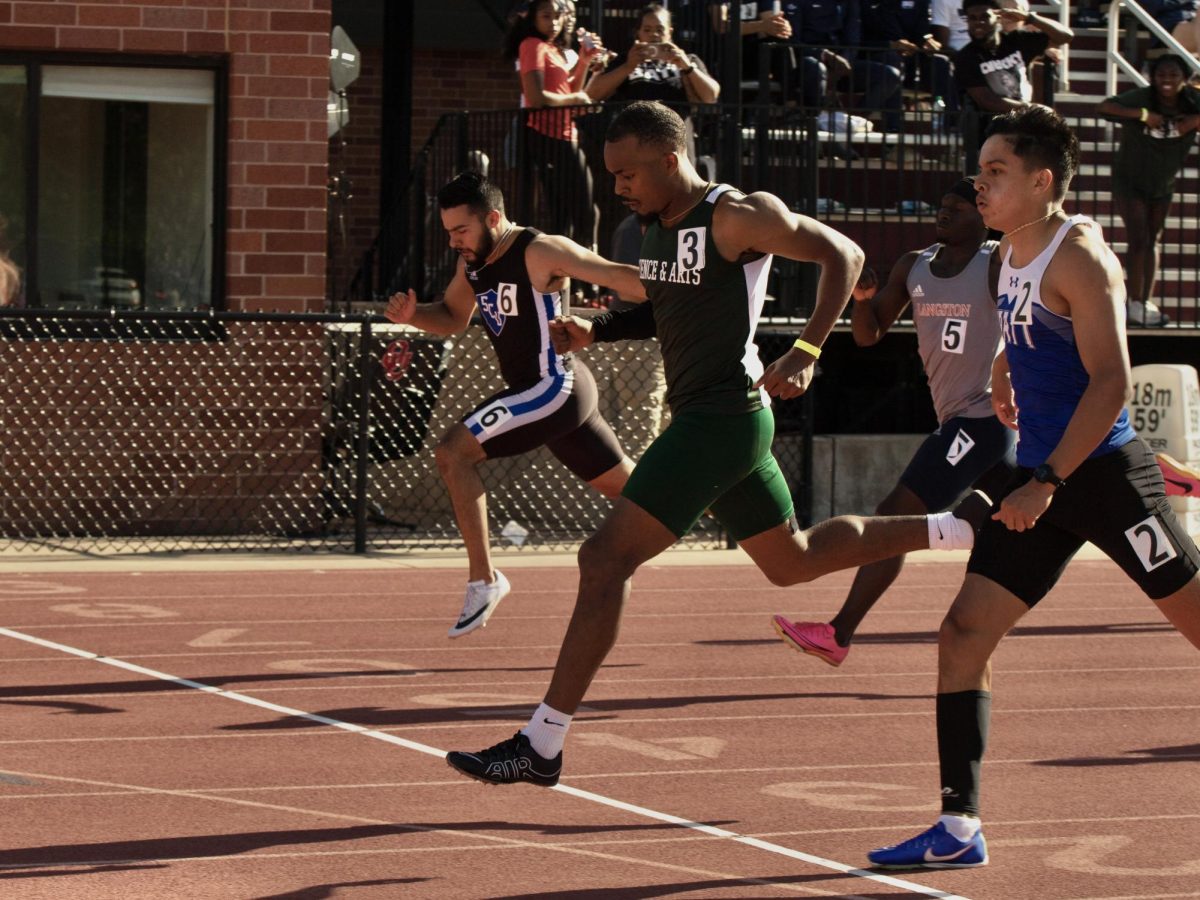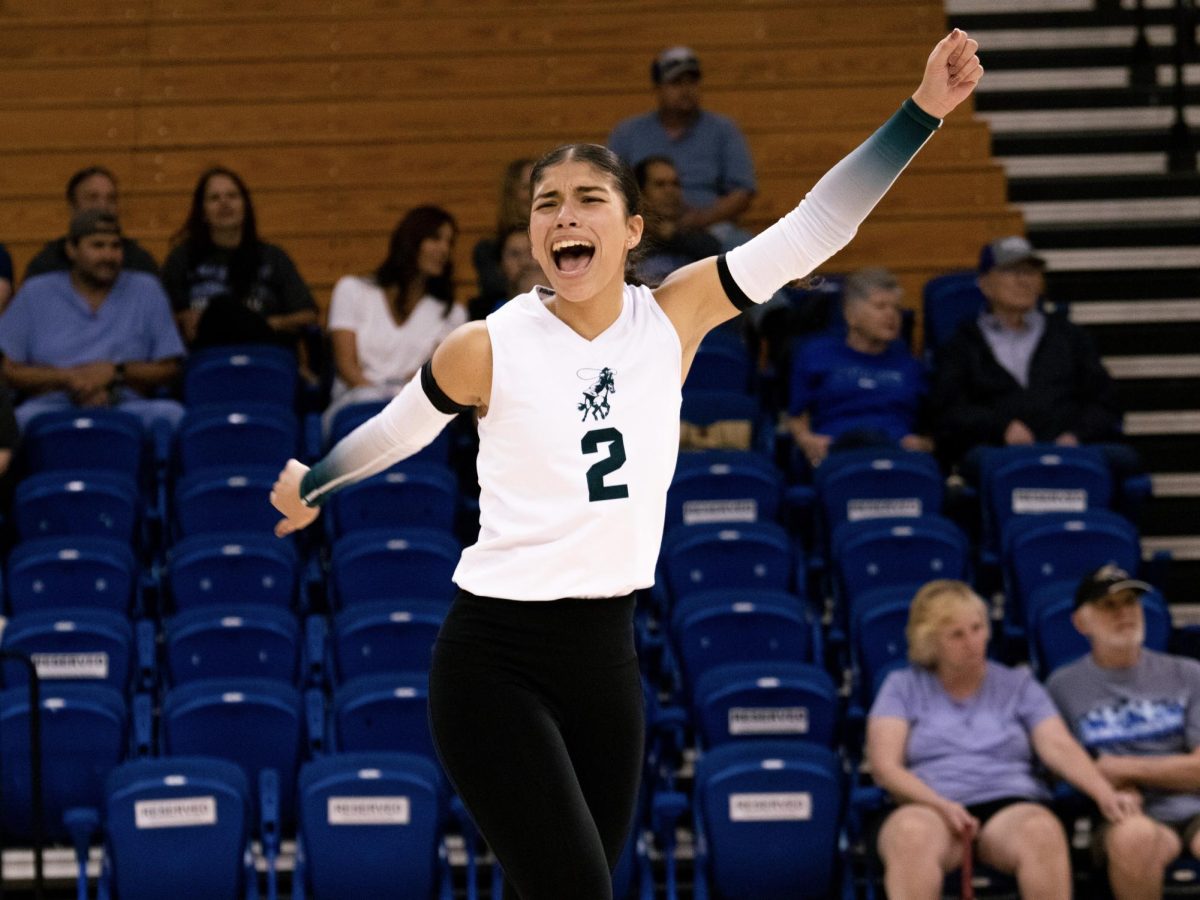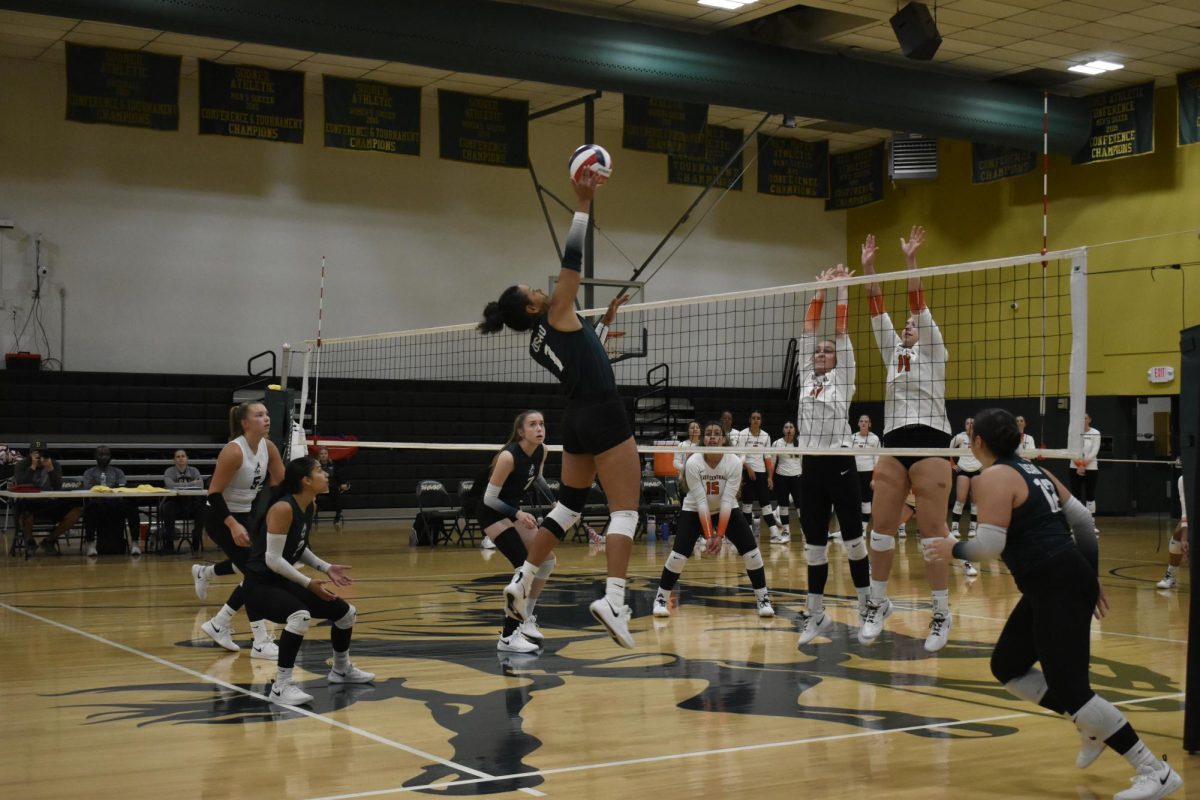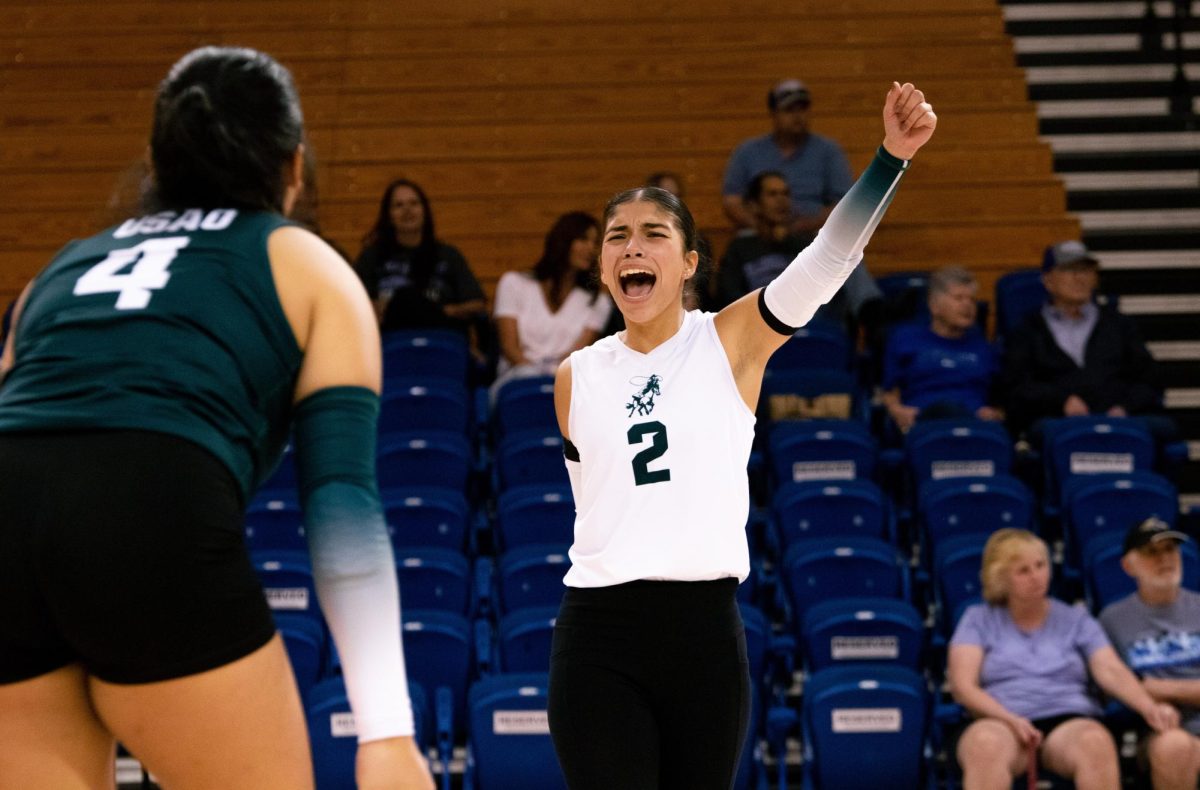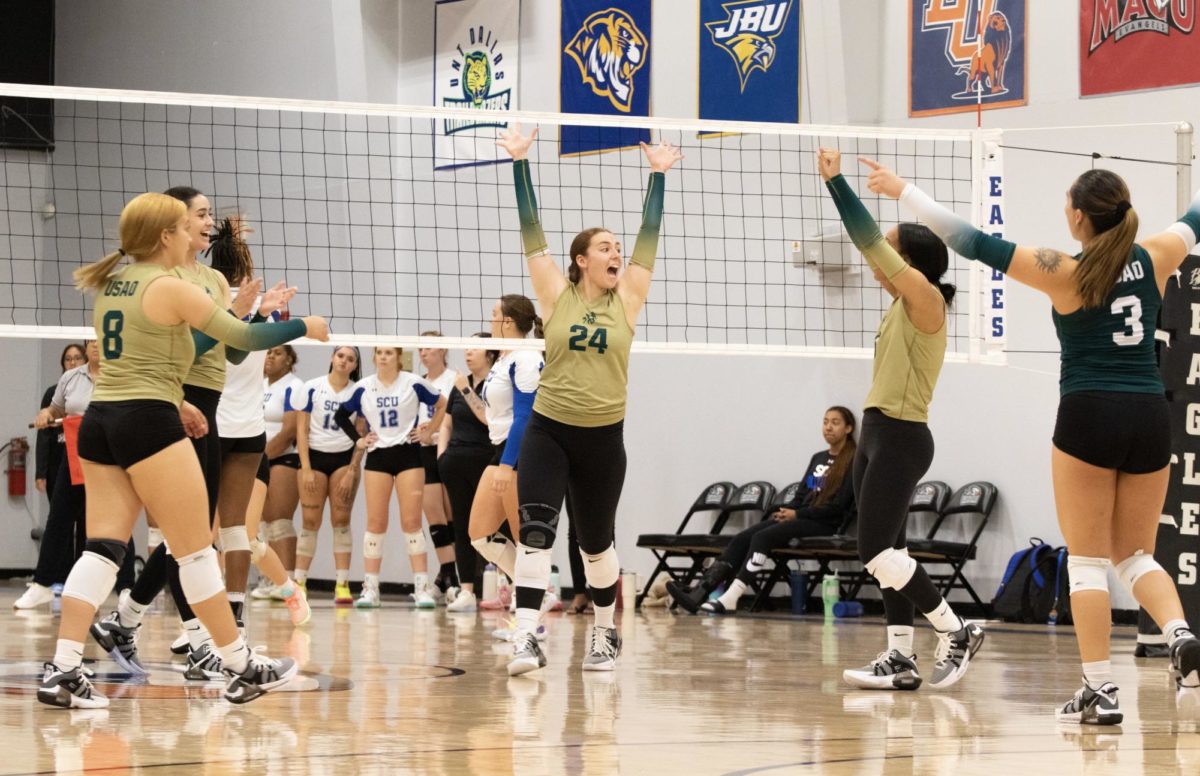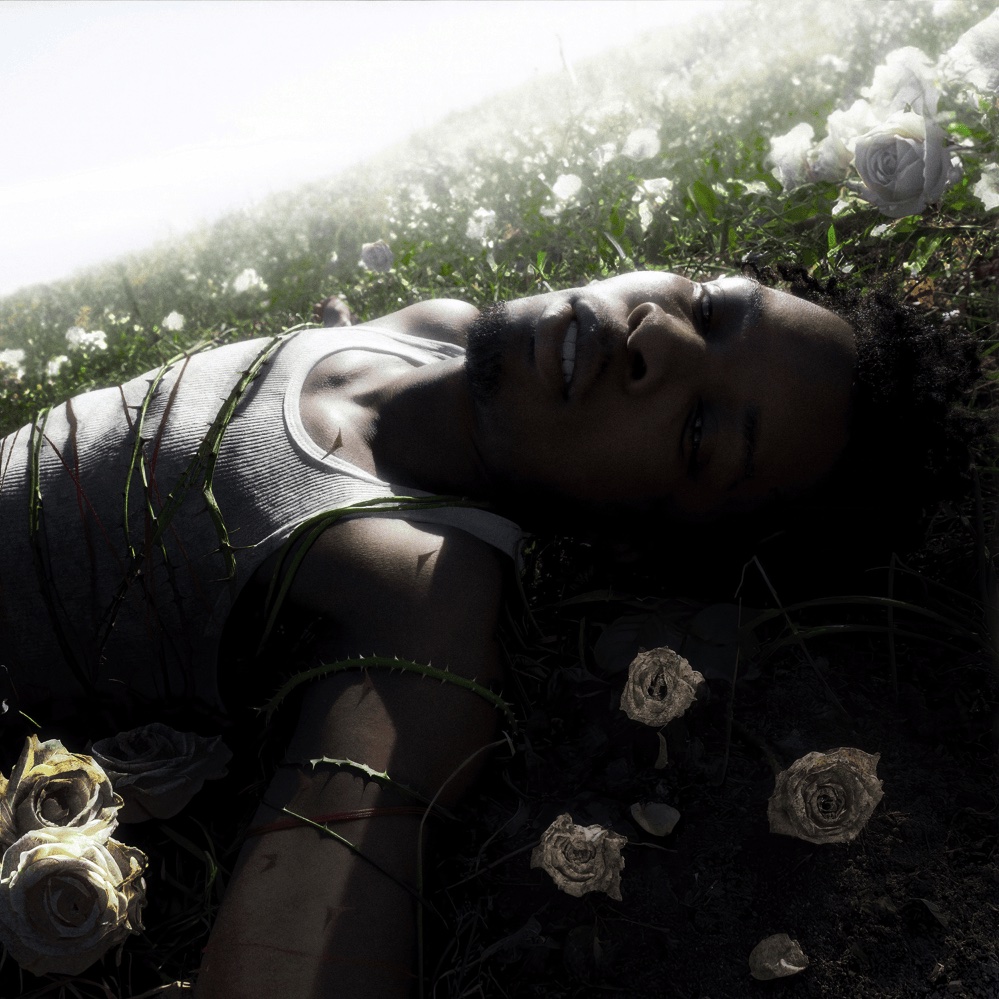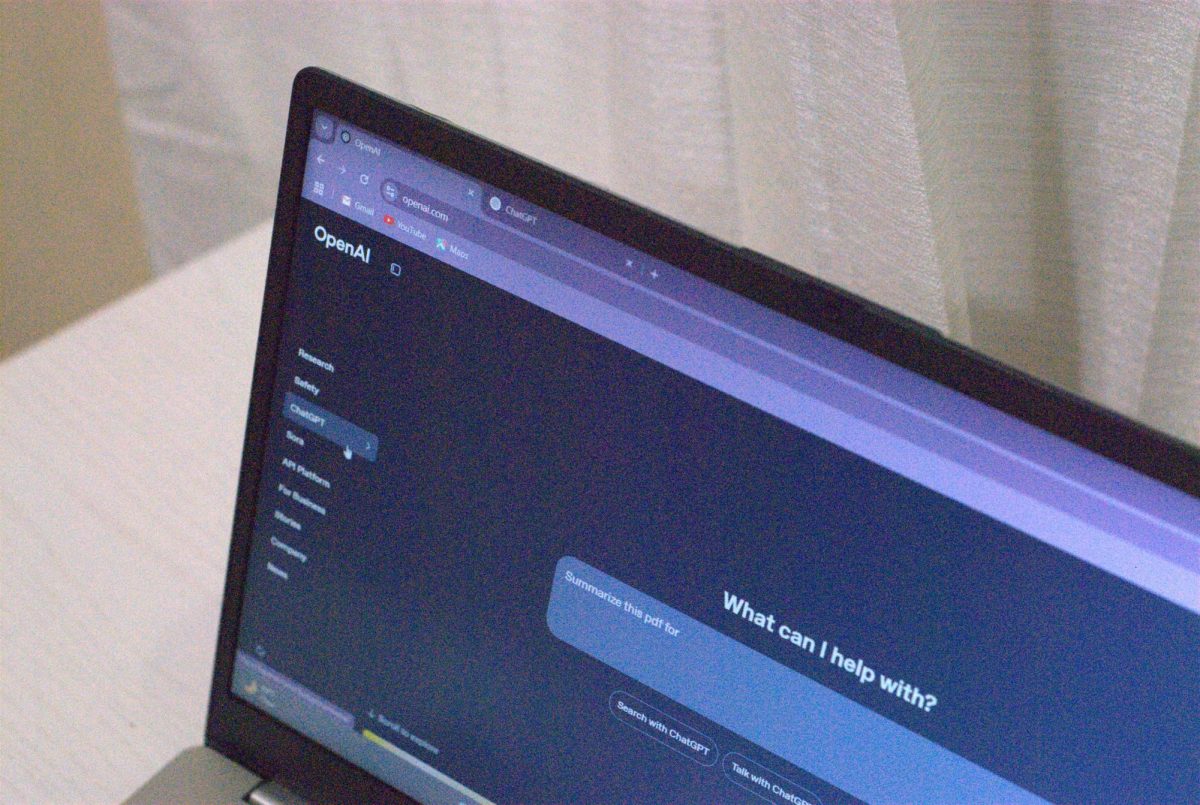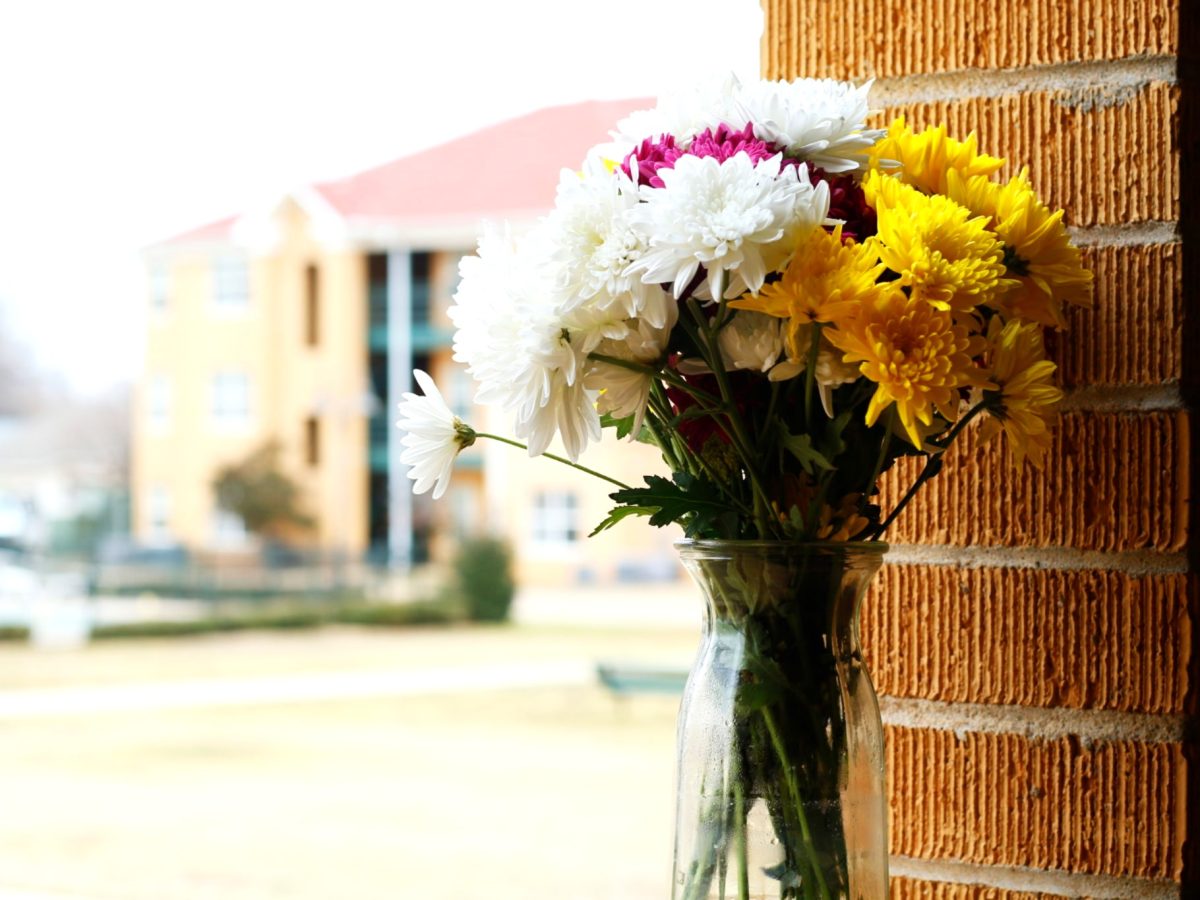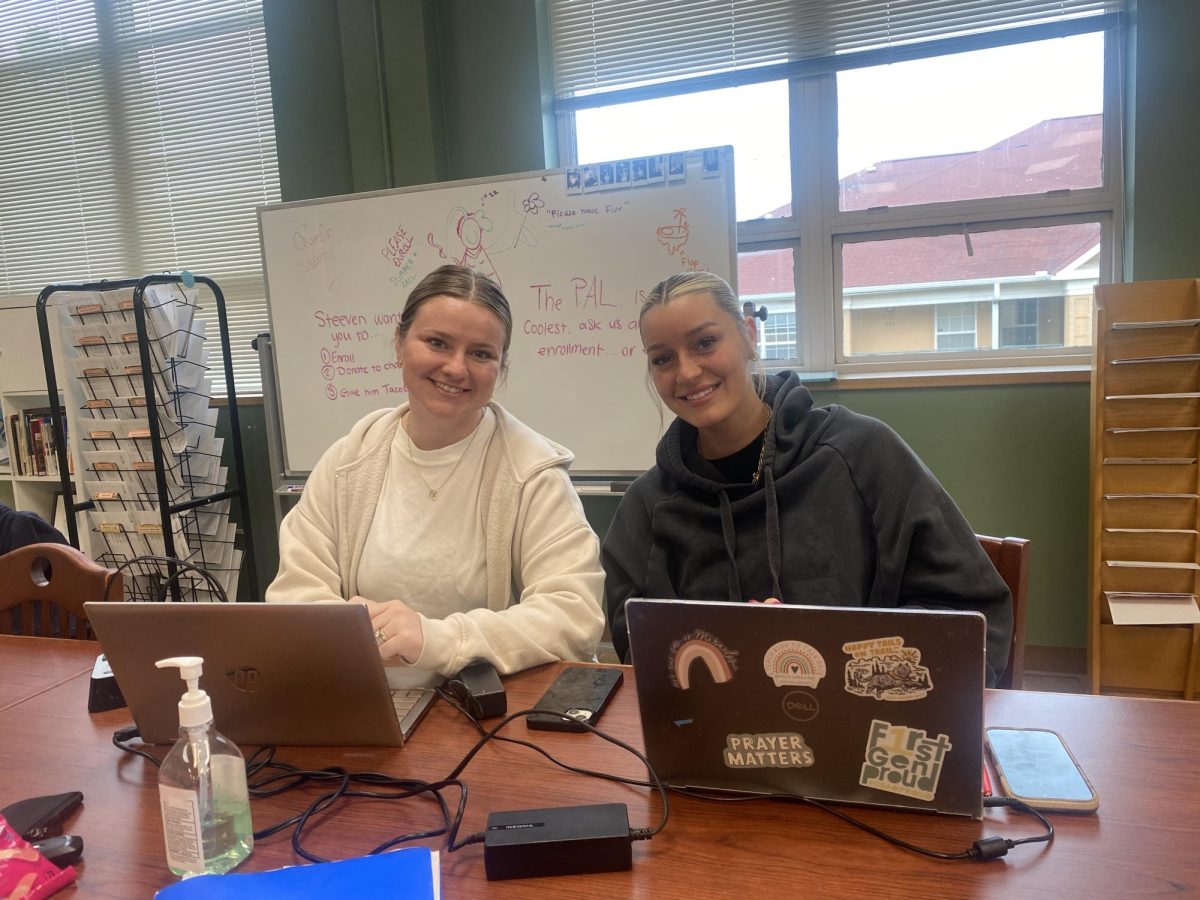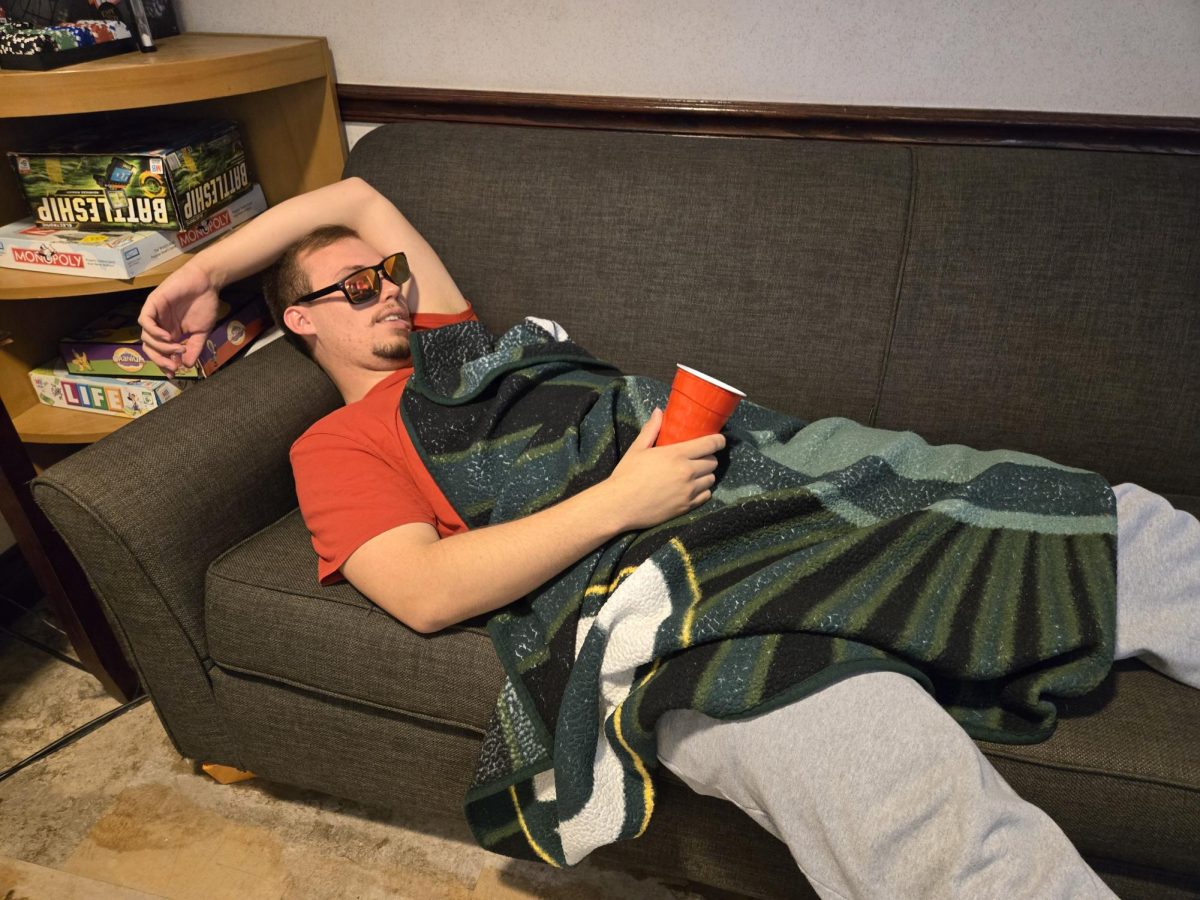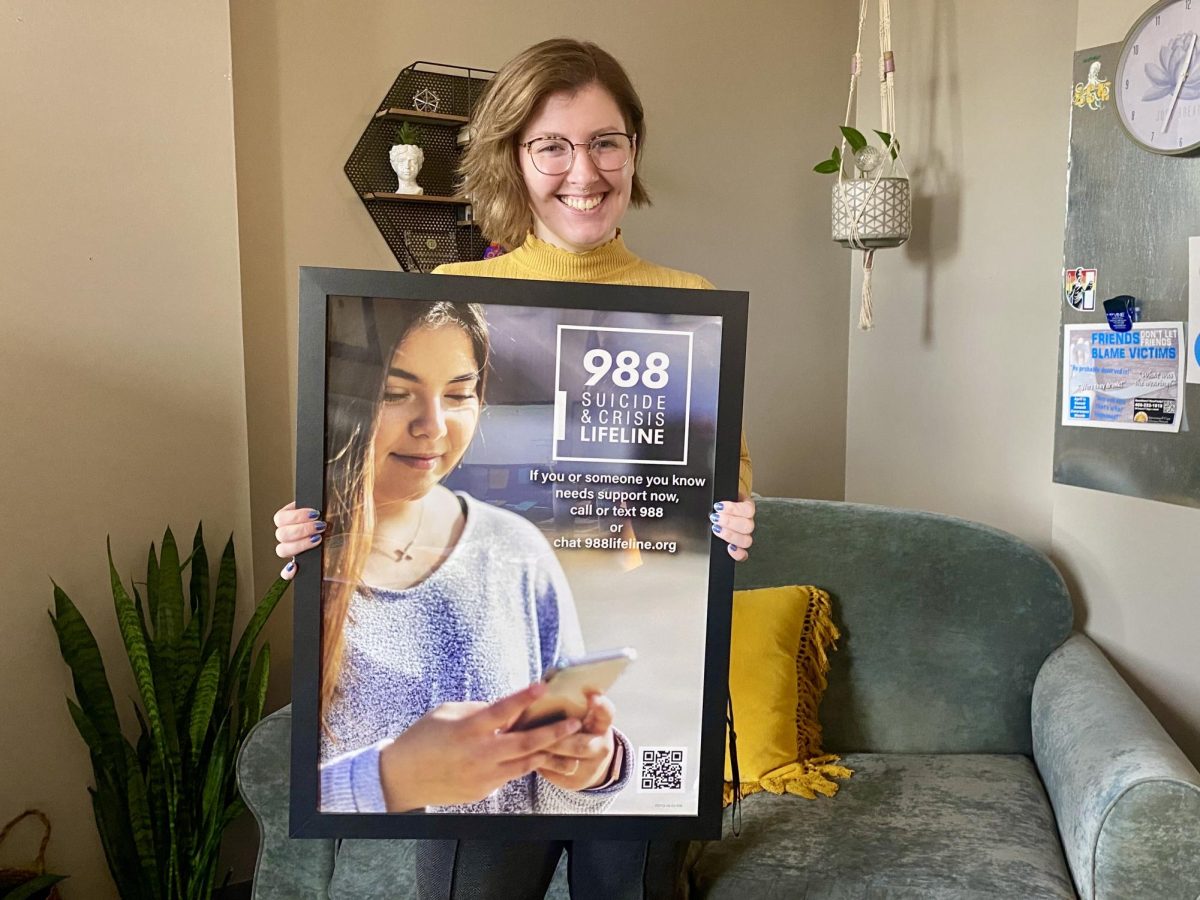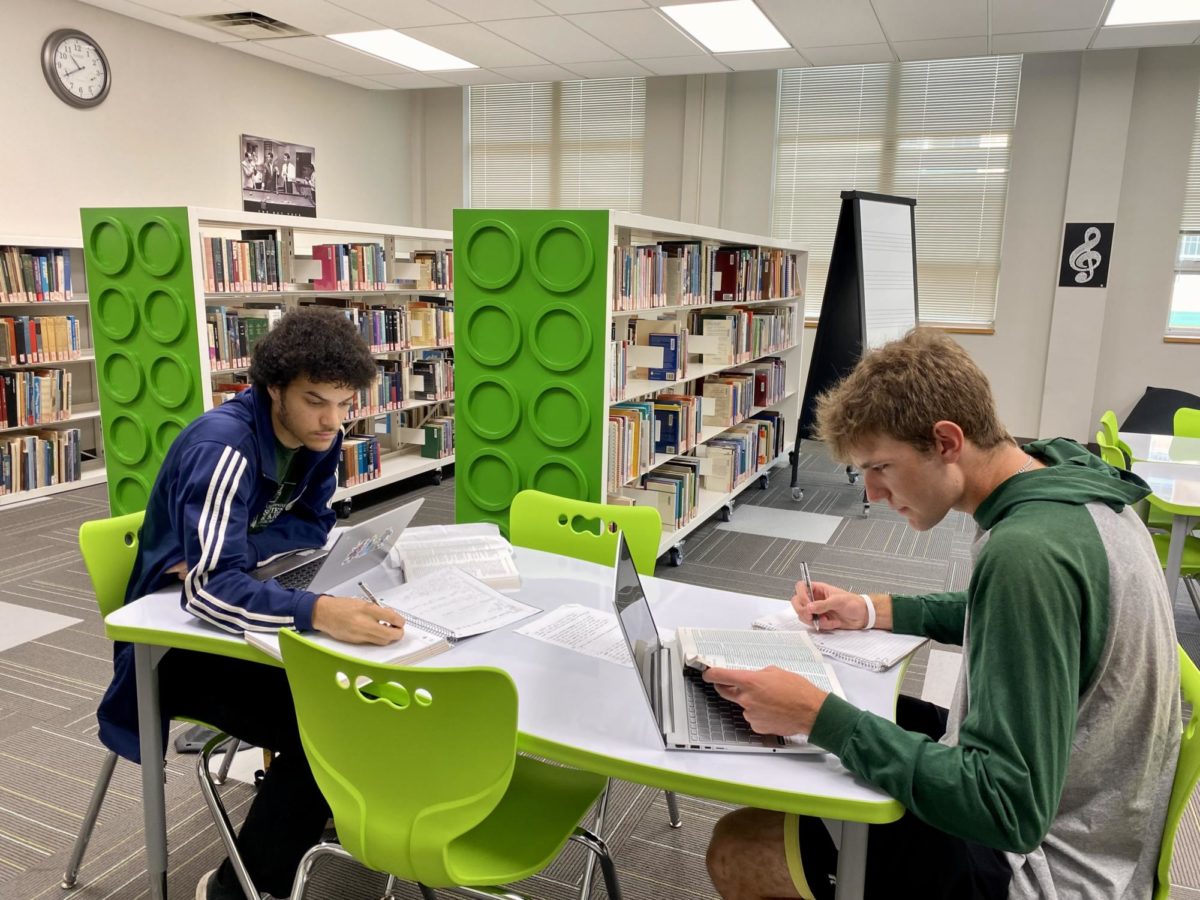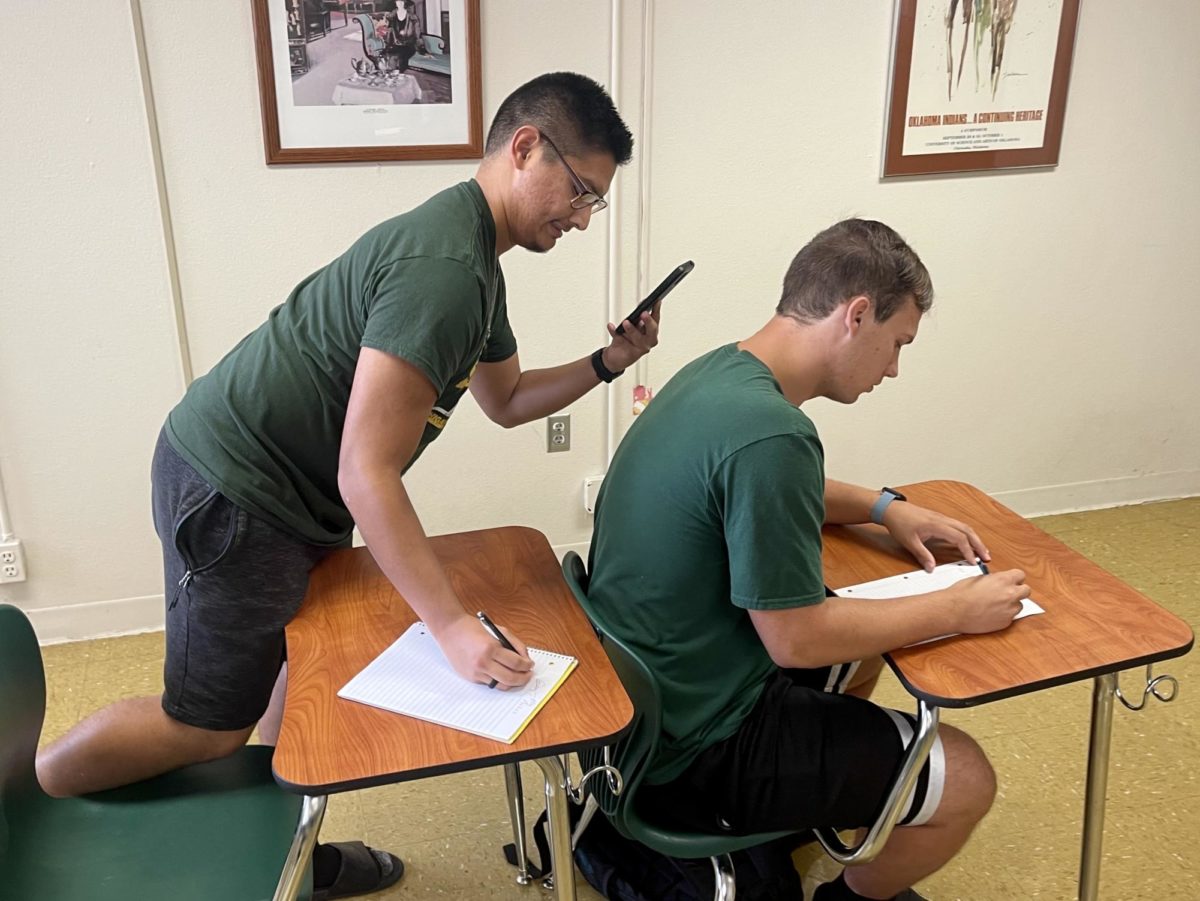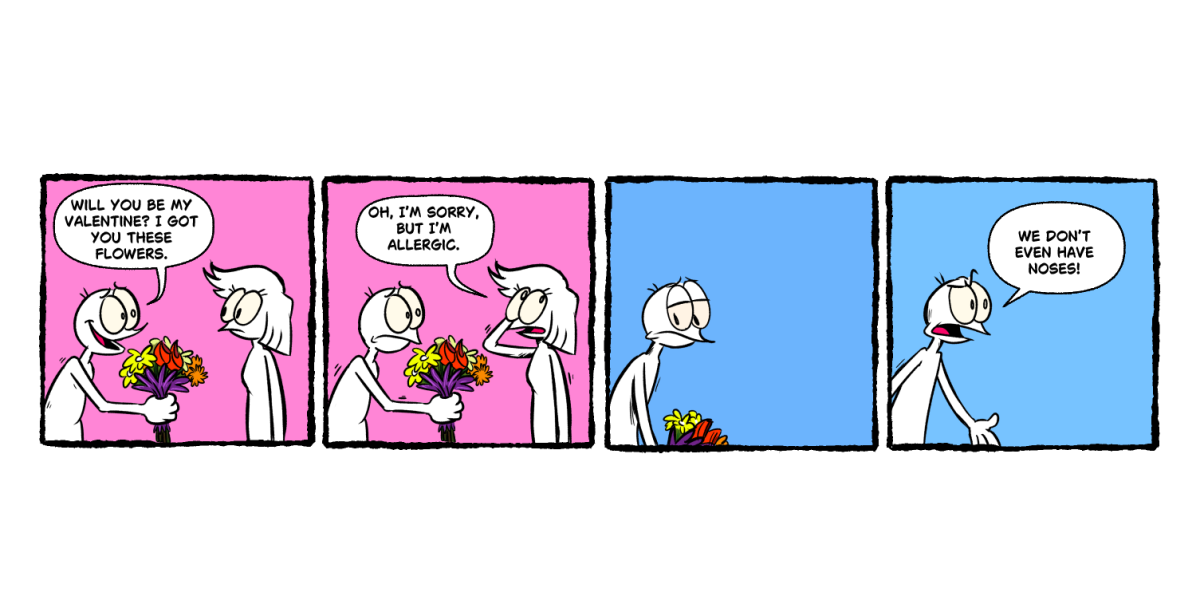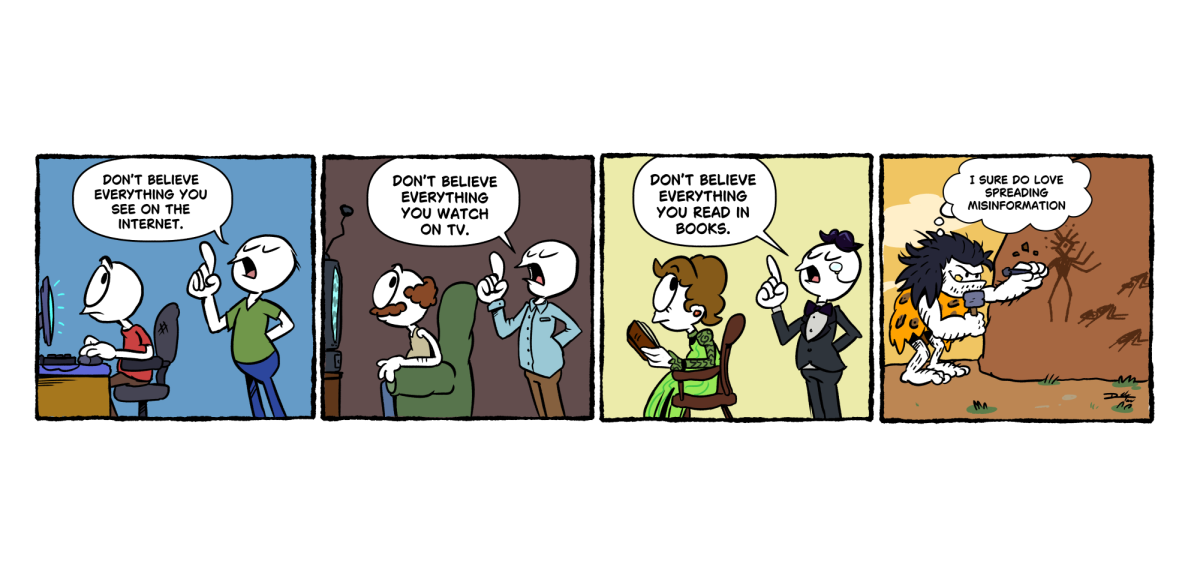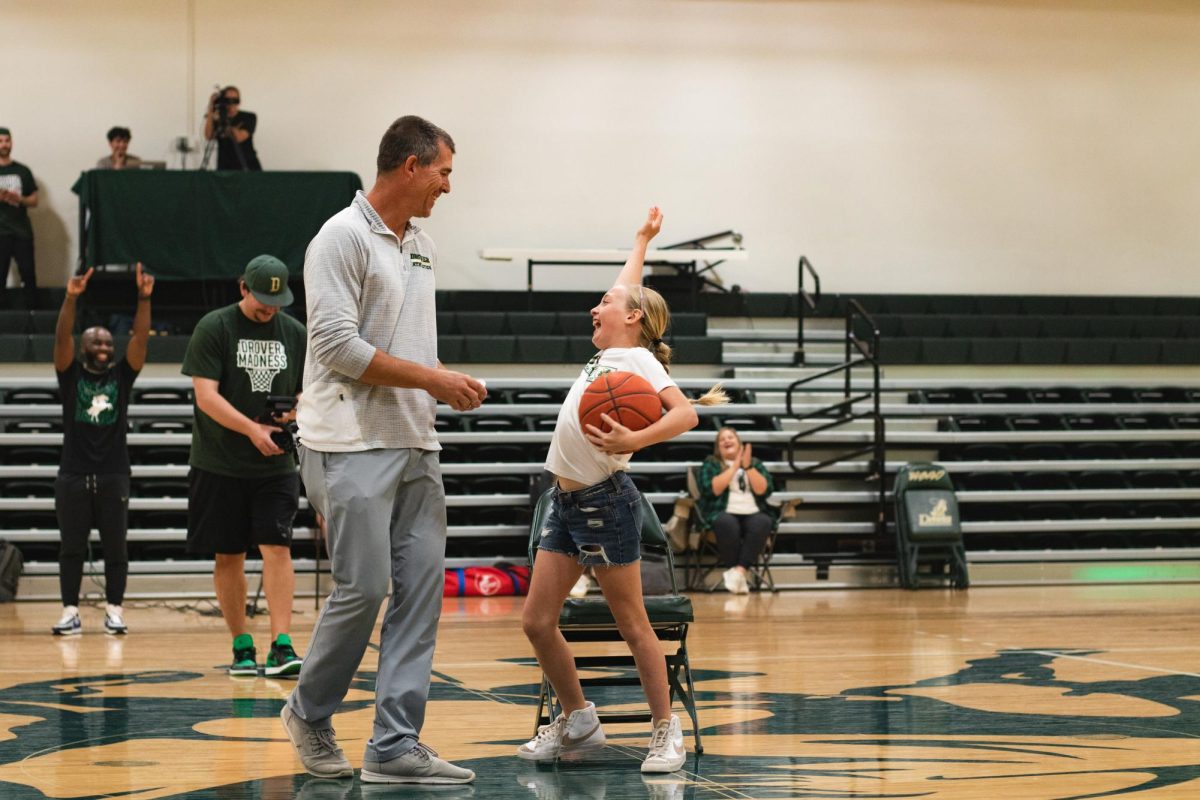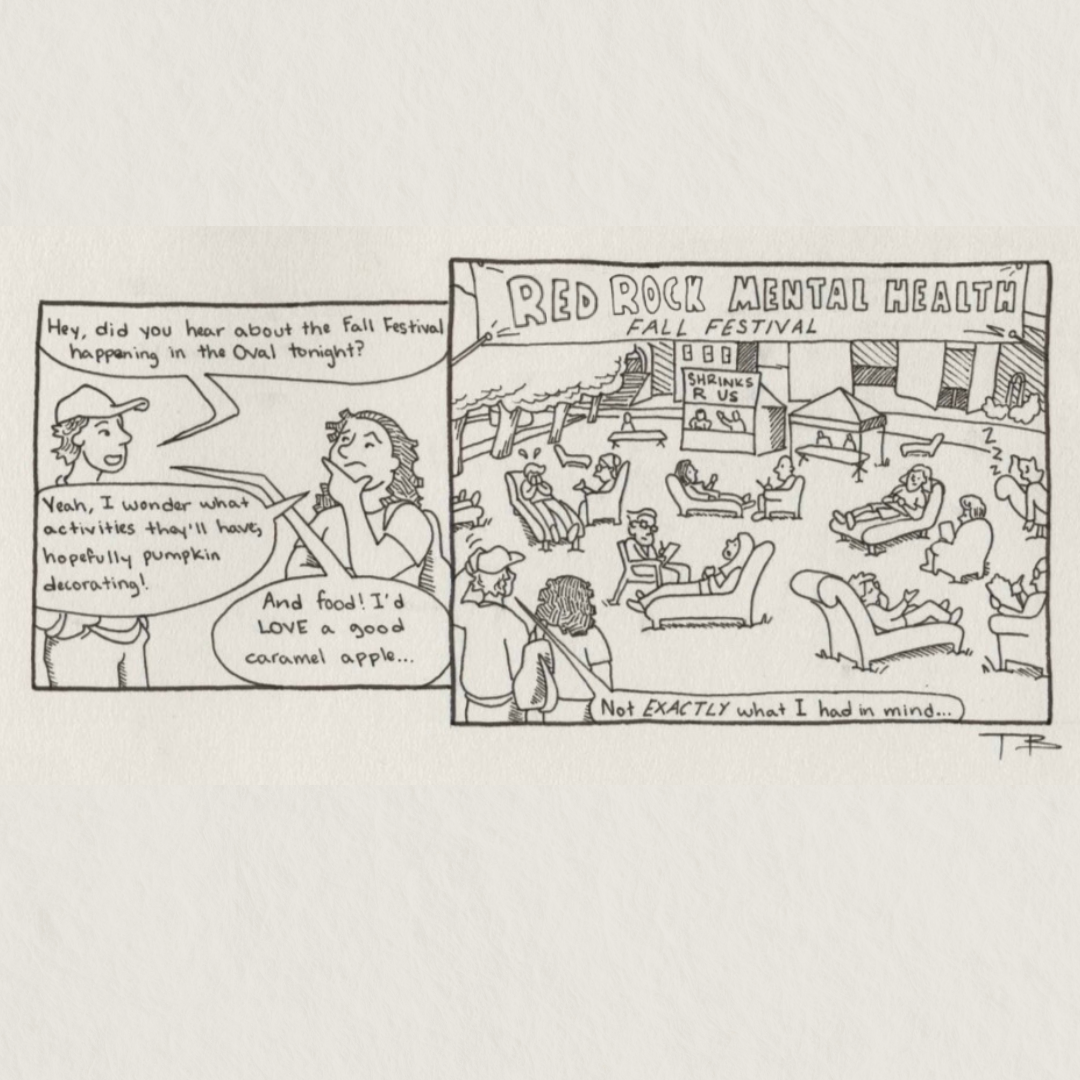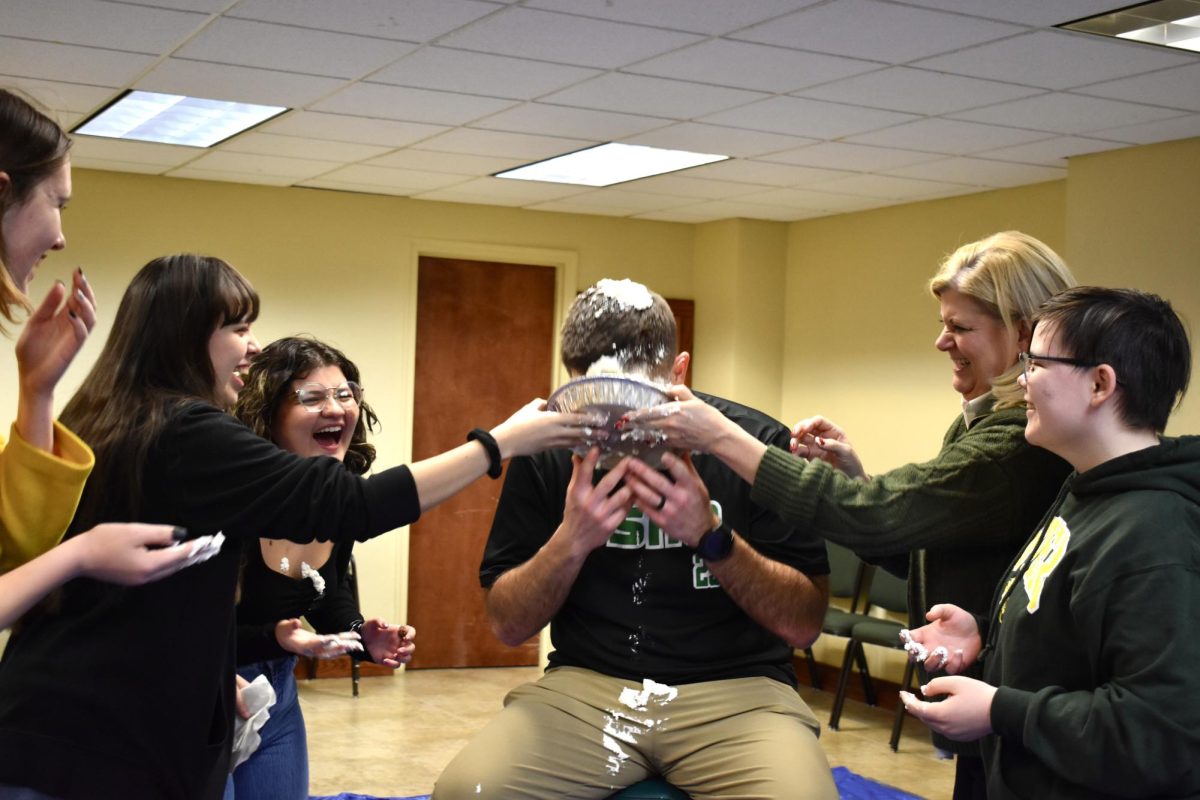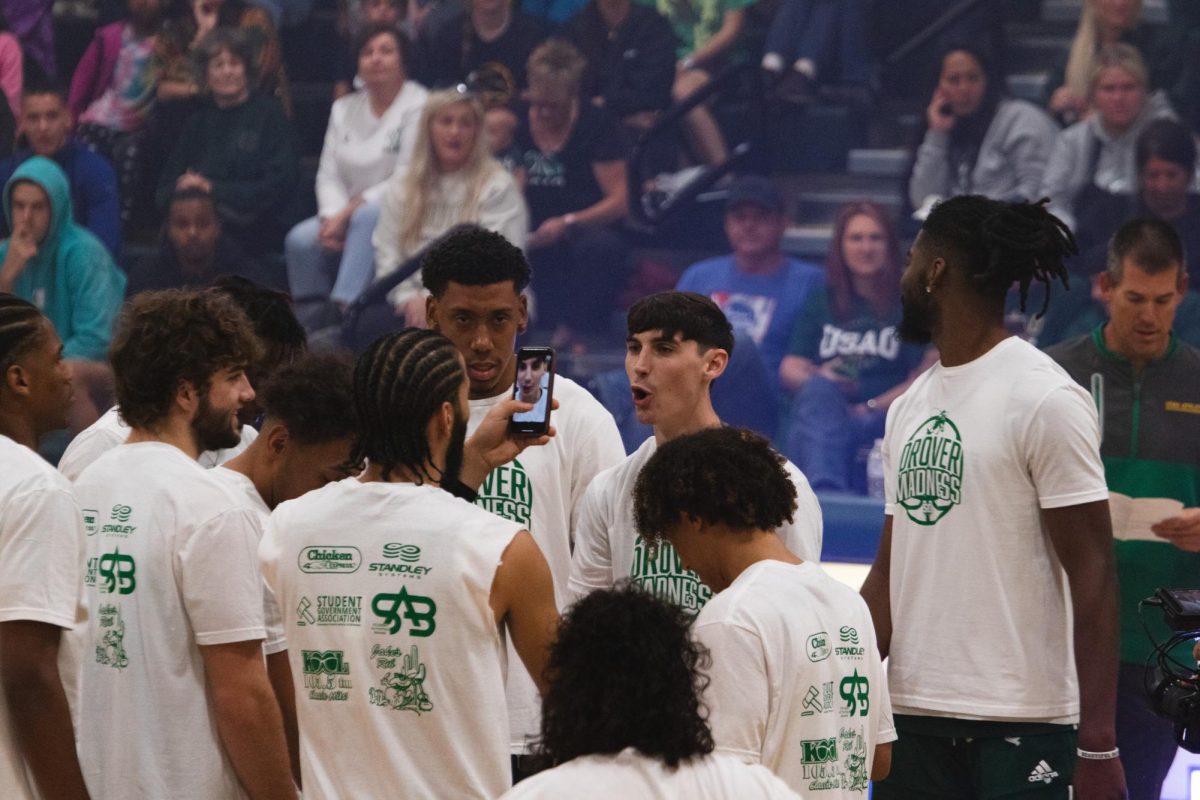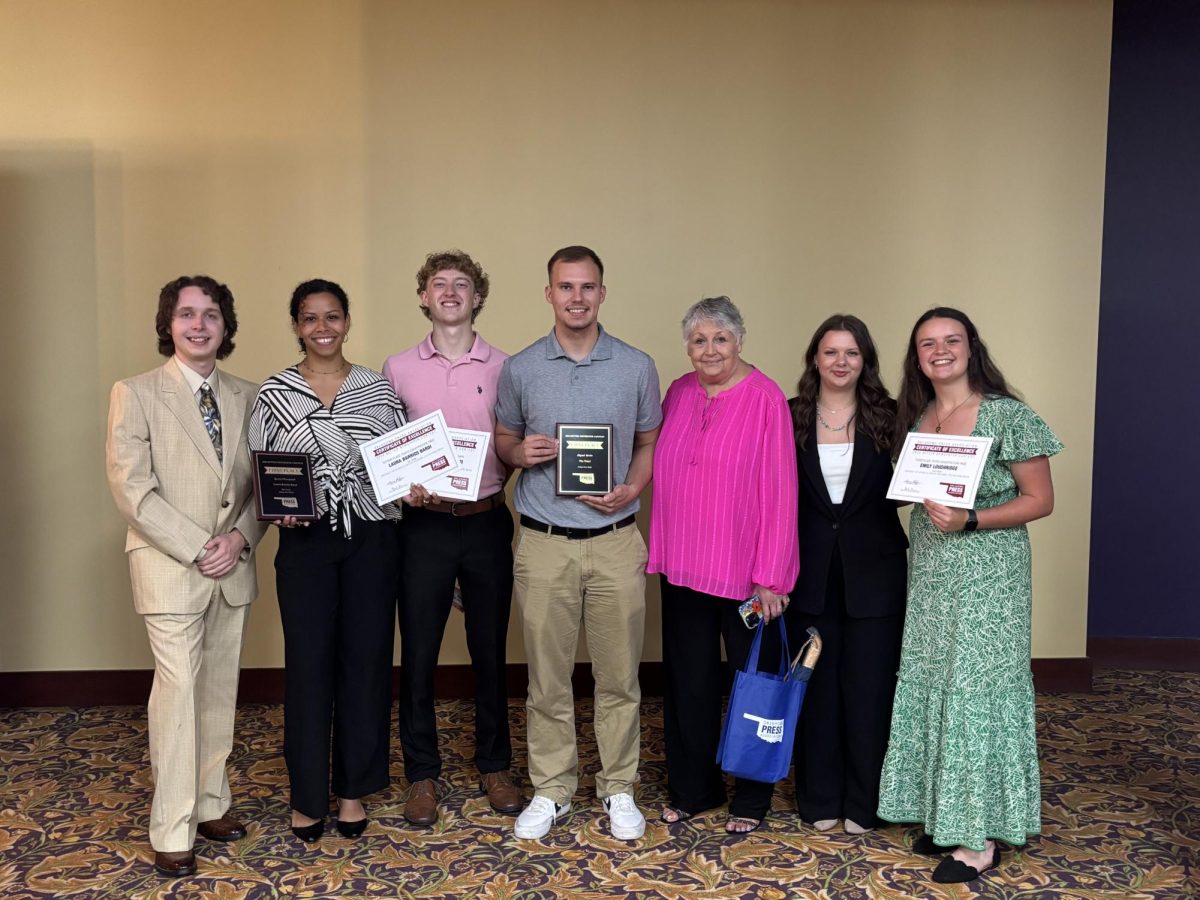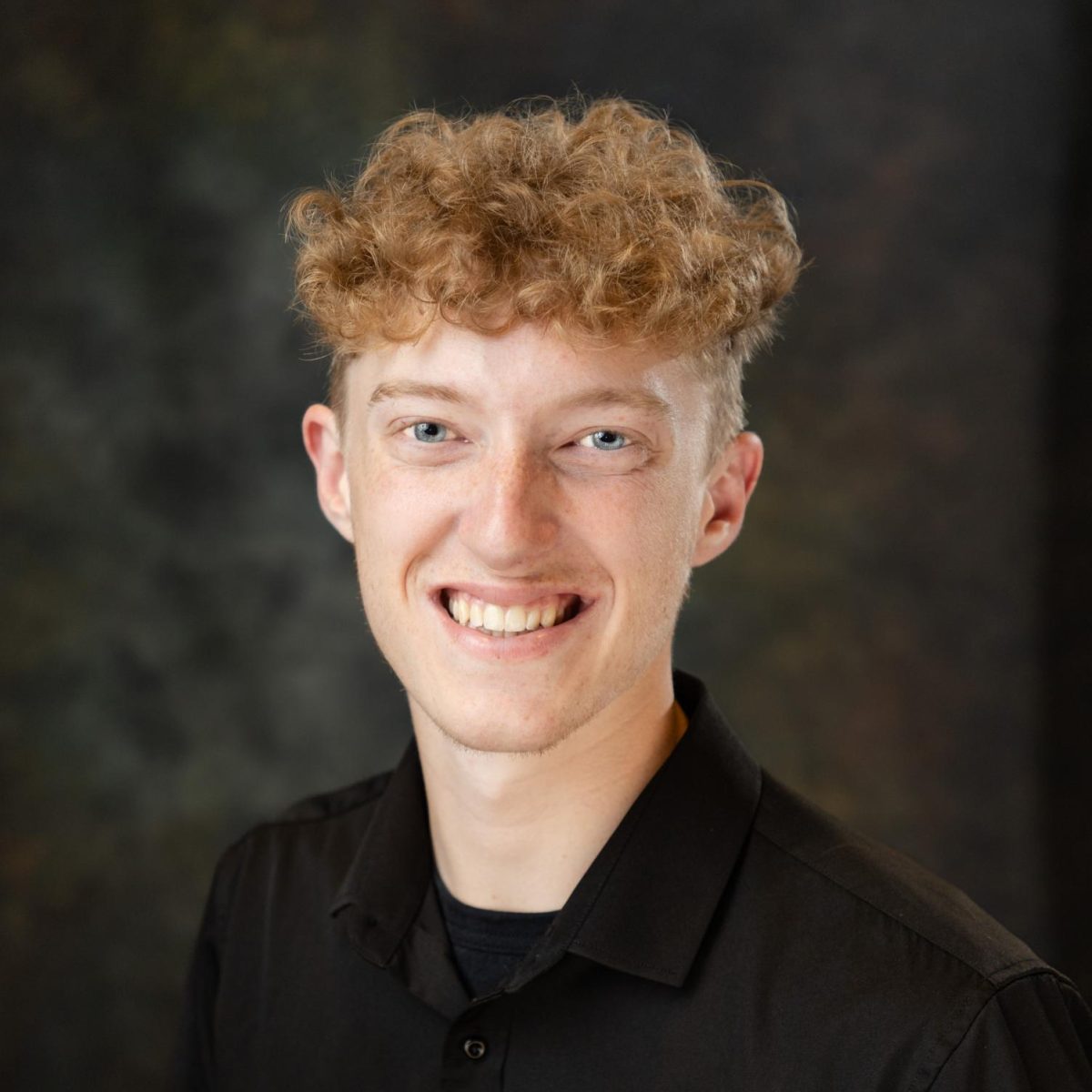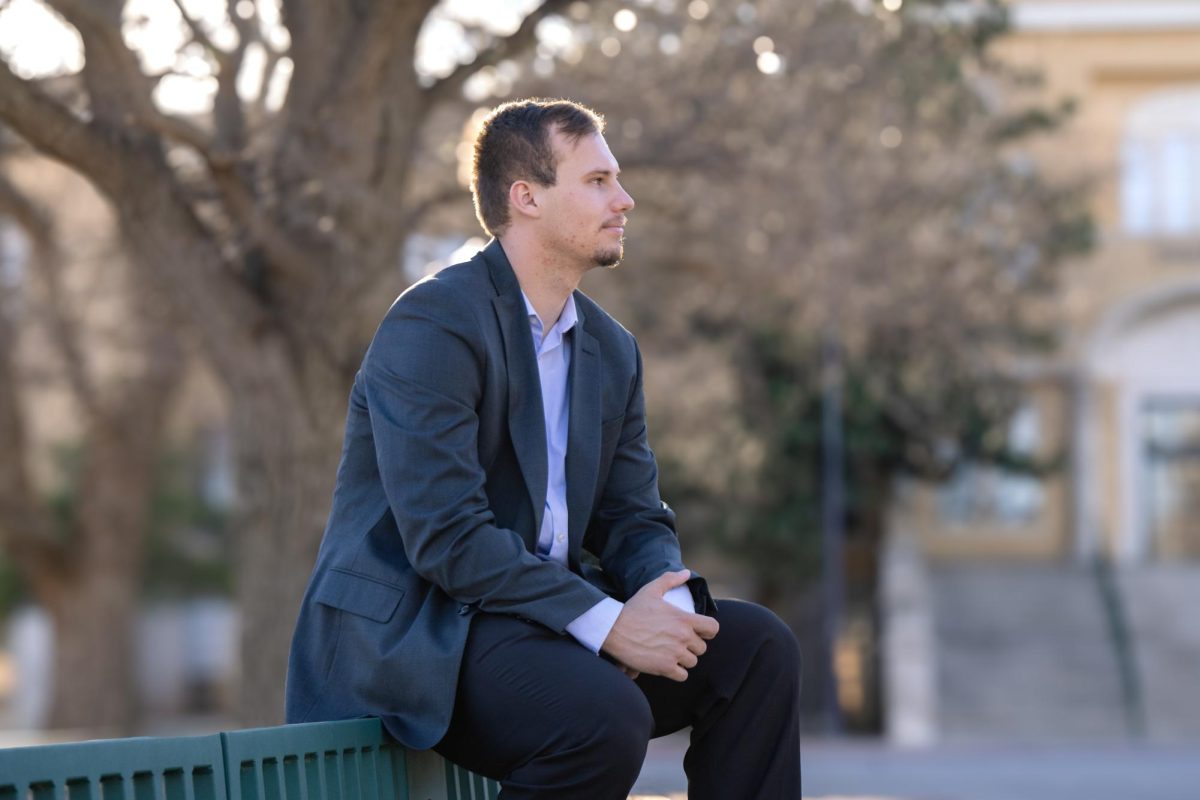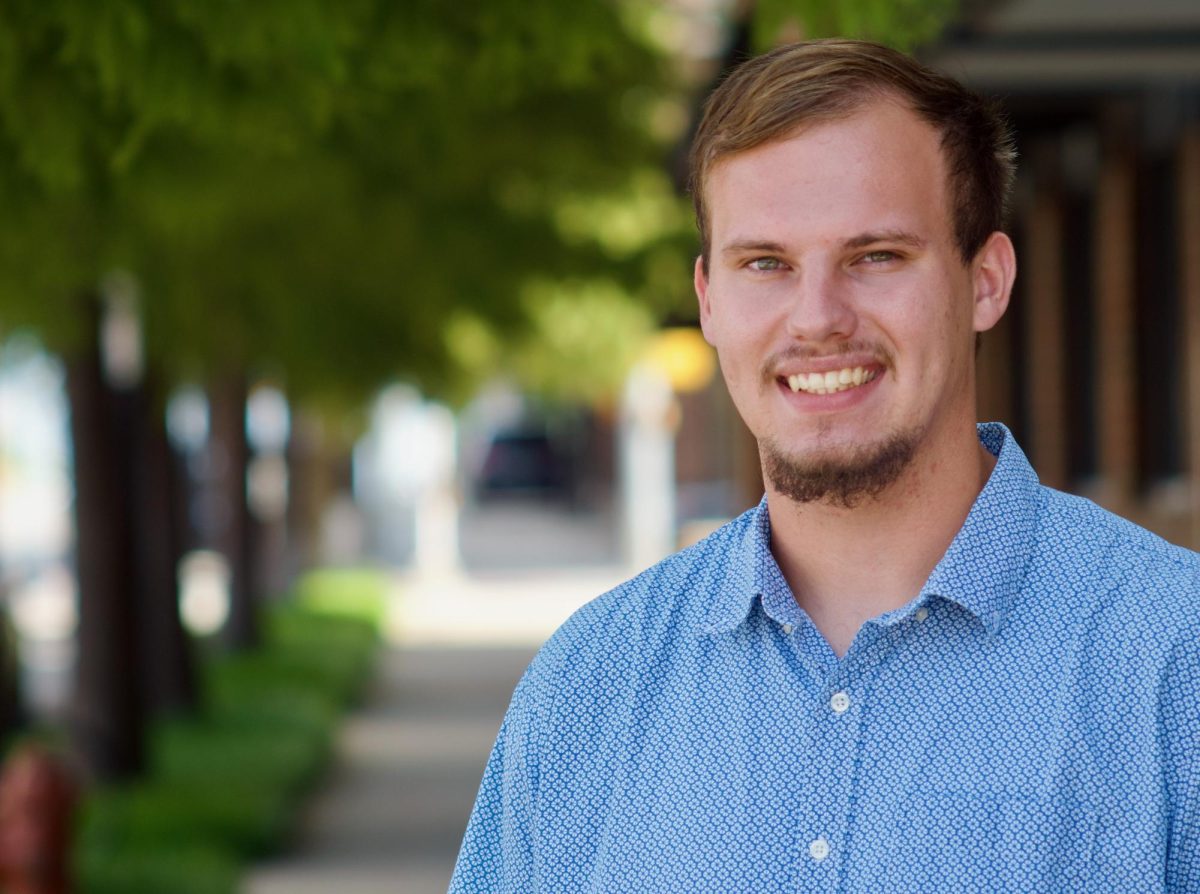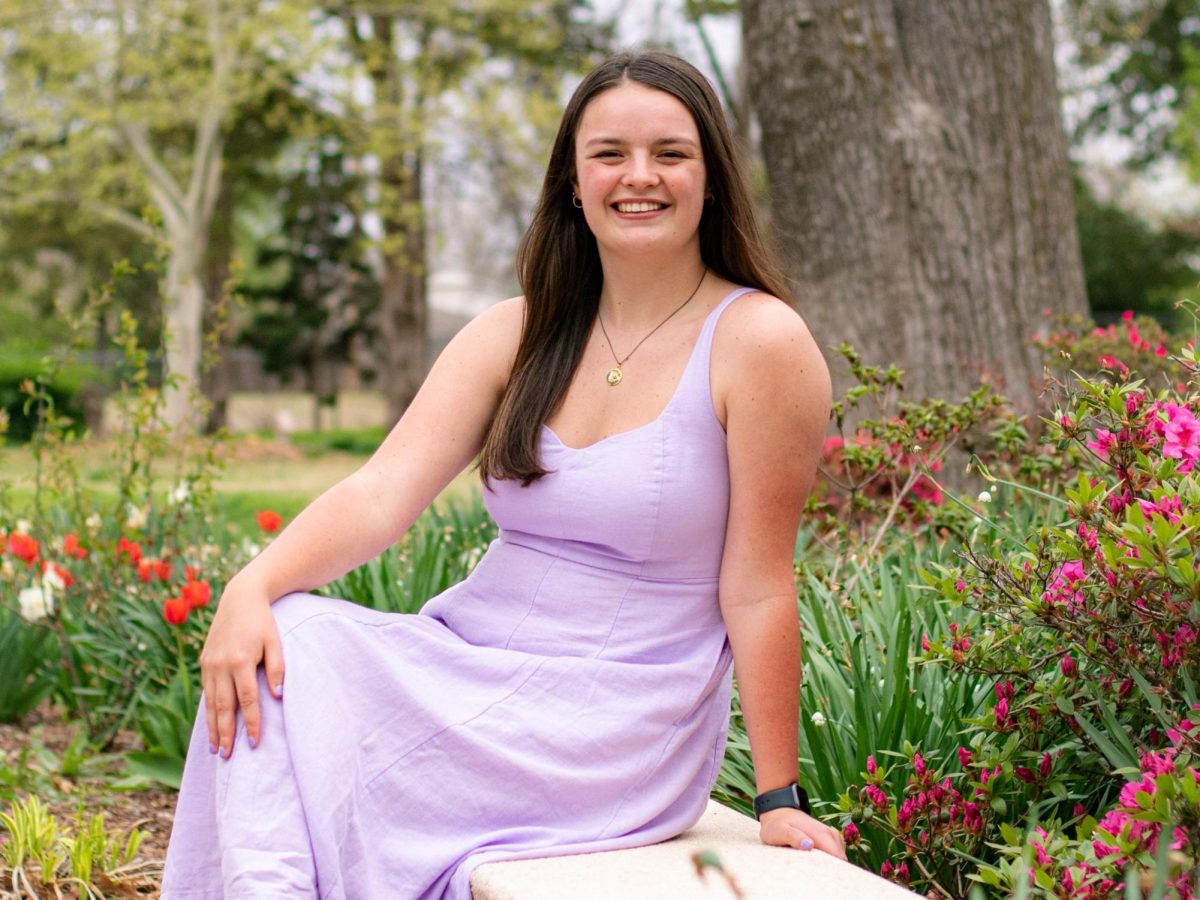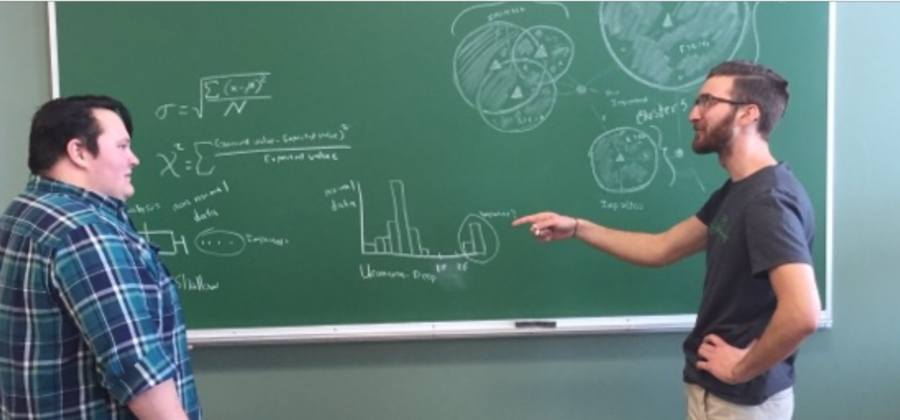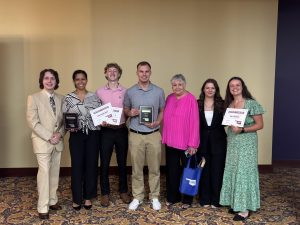PIC Math Class Bound for Boston
PIC Mathematics students Thayne McCage and Connor Cheek discussing the findings of their research before they attend the National Society for Industrial and Applied Mathematics in Boston, Massachusetts from July the 11-15.
June 13, 2016
During their college careers, most students will question at least once why they are having to take many mathematics classes that they think they will never use in life after college. This is not true for students who were enrolled in the spring 2016 Preparation for Industrial Careers in Mathematics class (PIC Mathematics) taught by Dr. Quan Tran, associate professor of mathematics.
These students were given the challenge of working with real-world math problems and selected to present their findings at a national conference in Boston, Mass., at the National Society for Industrial and Applied Mathematics July 11 – 15.
According to Tran, the goal of the PIC math class is different from every other mathematics class taught at USAO. While the purpose of most math classes is to teach students how to solve mathematics problems the simplest way and do not teach many real-world applications, he said, PIC Mathematics is almost the complete opposite
“The problem with calculus and other math courses is that there is no application, their purpose is to teach skills in simple ways. Real-world math is much messier than that,” Tran said. “The goal of this class is to teach math research and non-academic mathematics.”
Each year in PIC mathematics, Tran asks businesses and government agencies if they have a mathematics problem that his class can work on. Once he selects a problem, he presents it to his class and they spend the entire semester trying to figure out how to solve this real-world mathematics problem.
This year, he said the students were presented with a ground water company that had levels of arsenic and uranium and wanted to know if these levels were naturally occurring or if a nearby mining community could be responsible. The class had to determine the natural levels of these elements. He said the students were able to find a solution.
After the solution was found, the class had to work together to prepare a video and report to give to the company explaining their results.
This will be the first time many of the students in this class present at a scientific conference. Mathematics/physics double major Connor Cheek is one of the students who will be presenting research for the first time. Cheek said he is very excited to present in Boston and because of this class, he is now planning on pursuing a graduate degree in computational mathematics.
Cheek said, “It was a fun application of math that I enjoyed.”
In addition to Cheek, other students presenting this research include: Reed Bryant, Jesika Forgue, Miracle Goodluck, Dao Thong Lim, Thayne McCage, Jake Roher, Molly Swift, and Jian Zhang.
